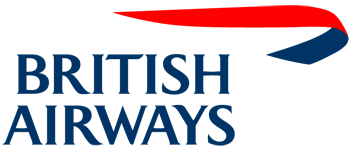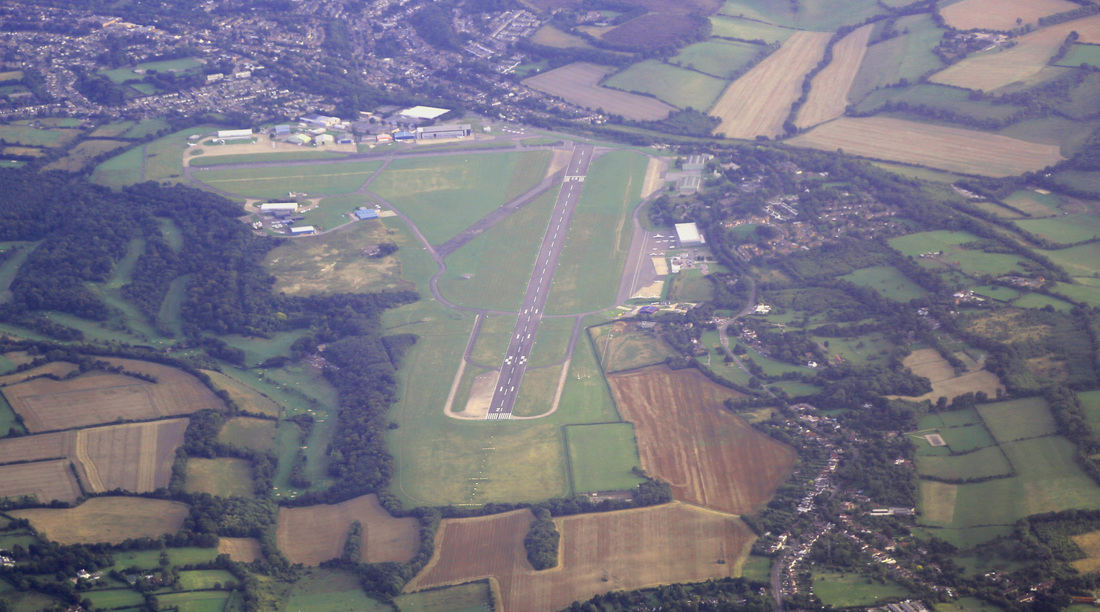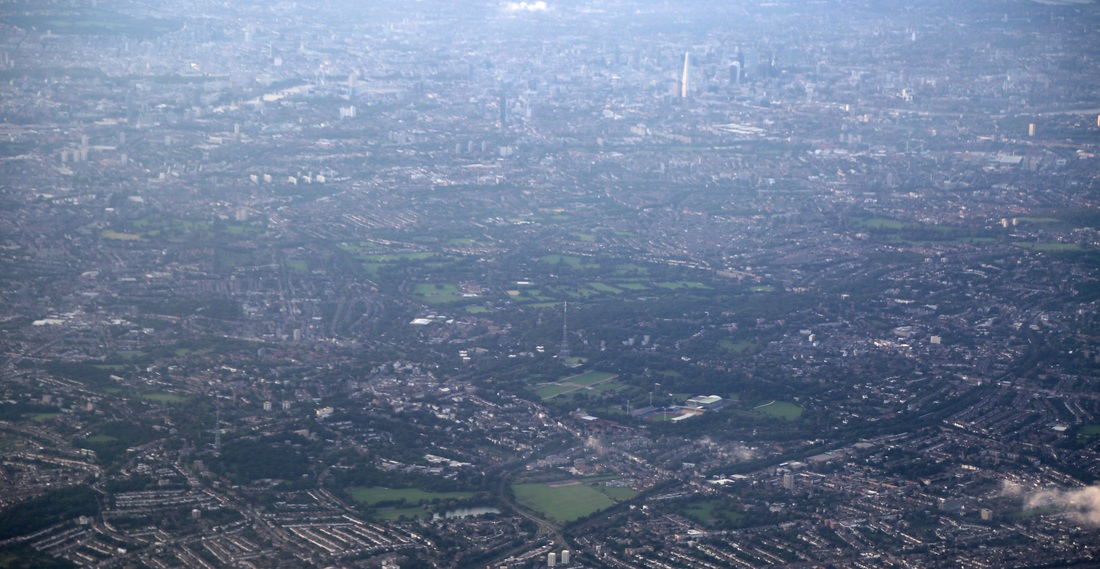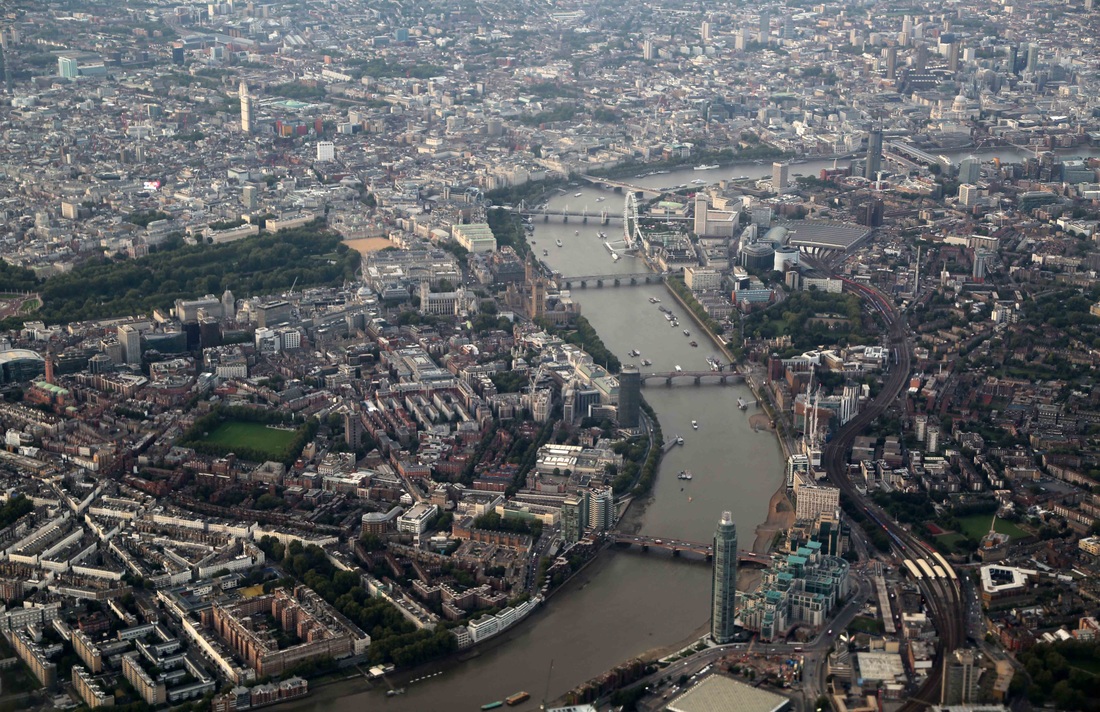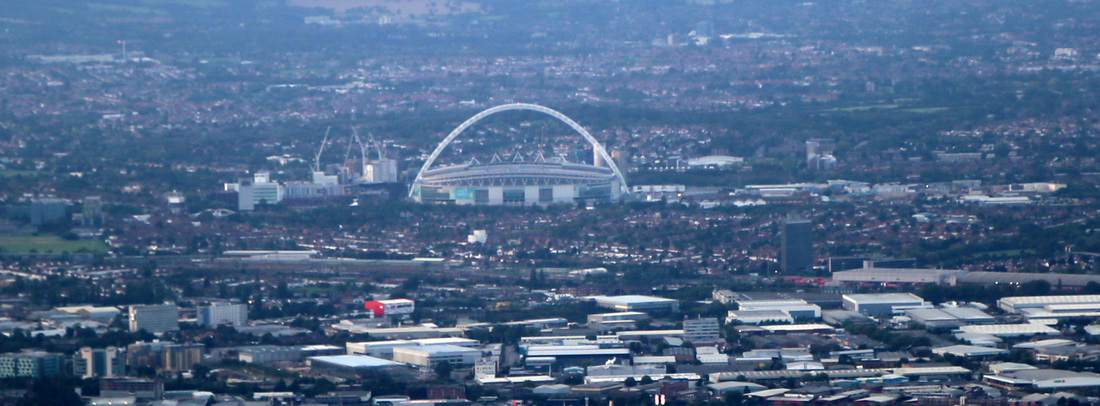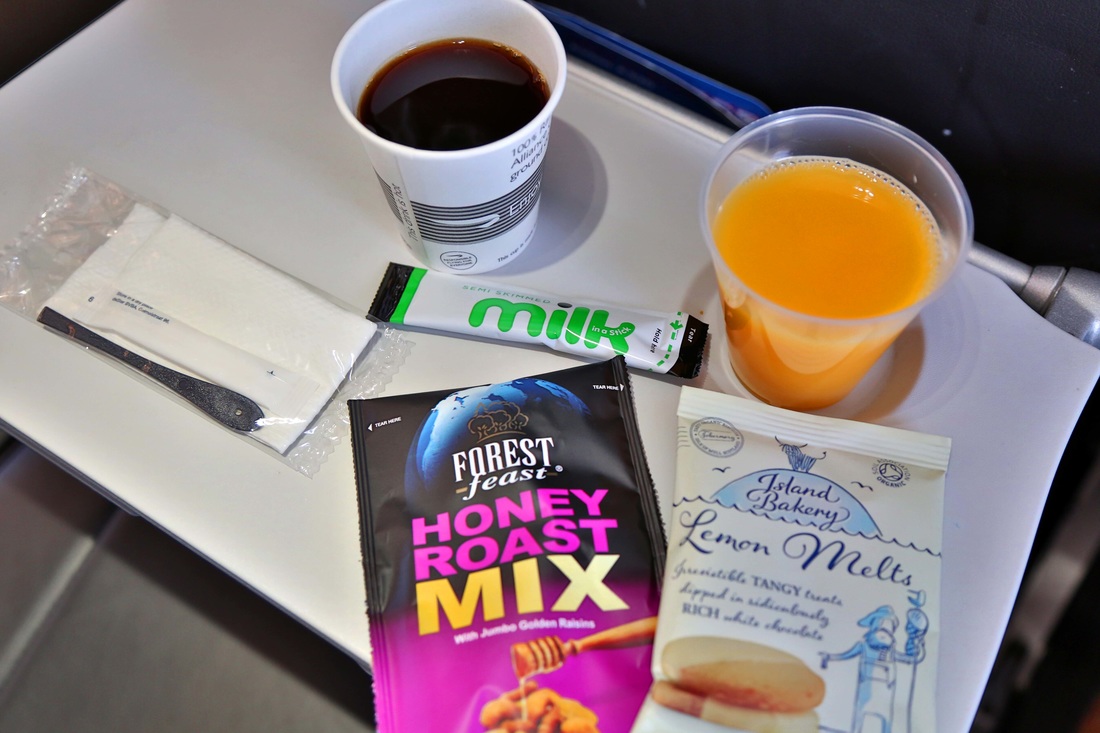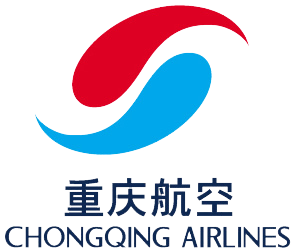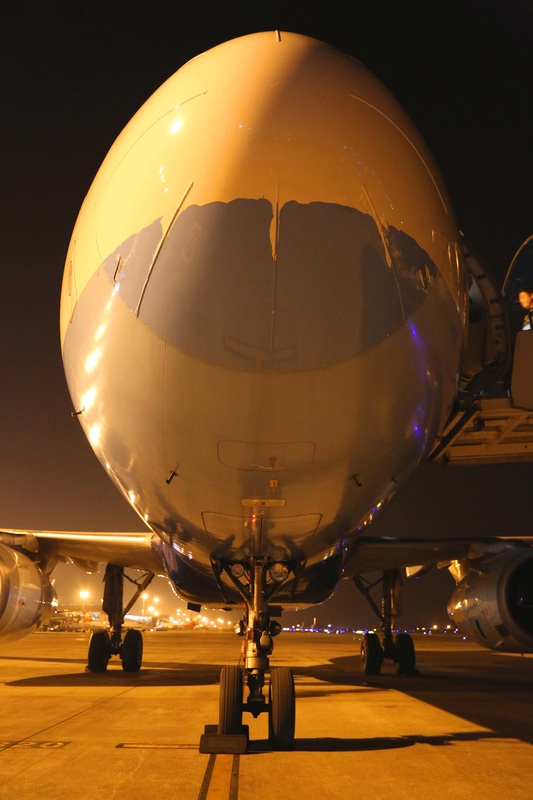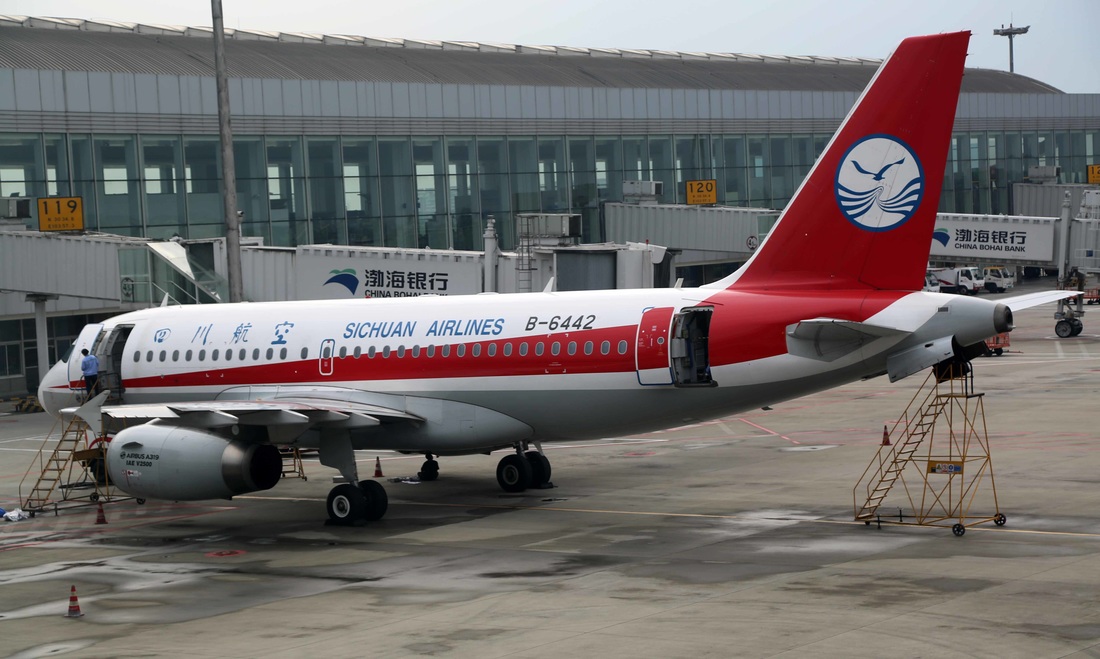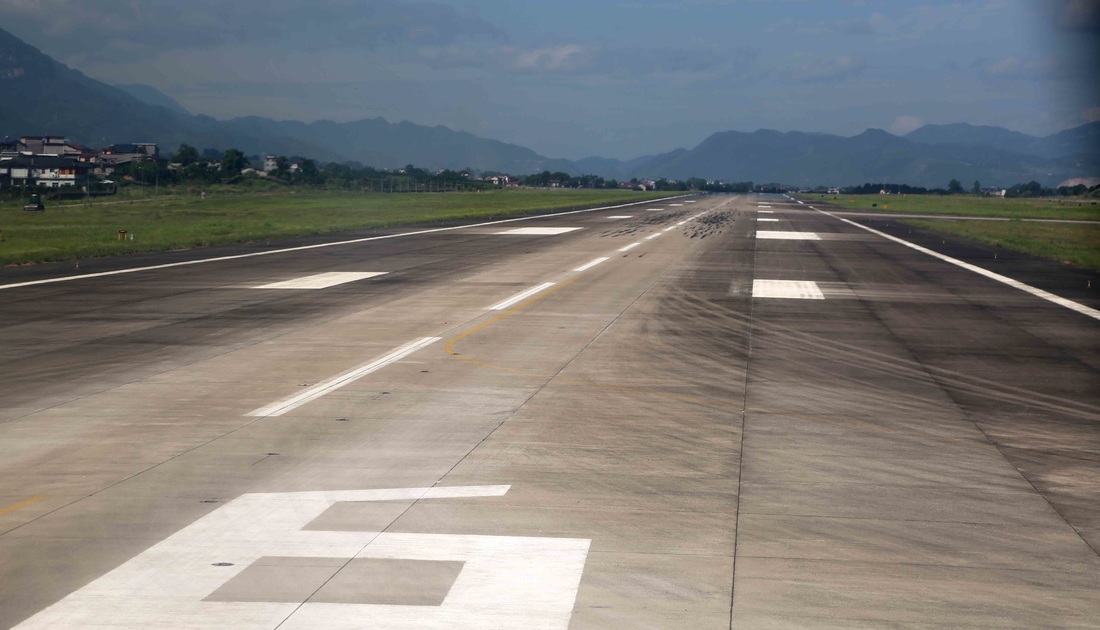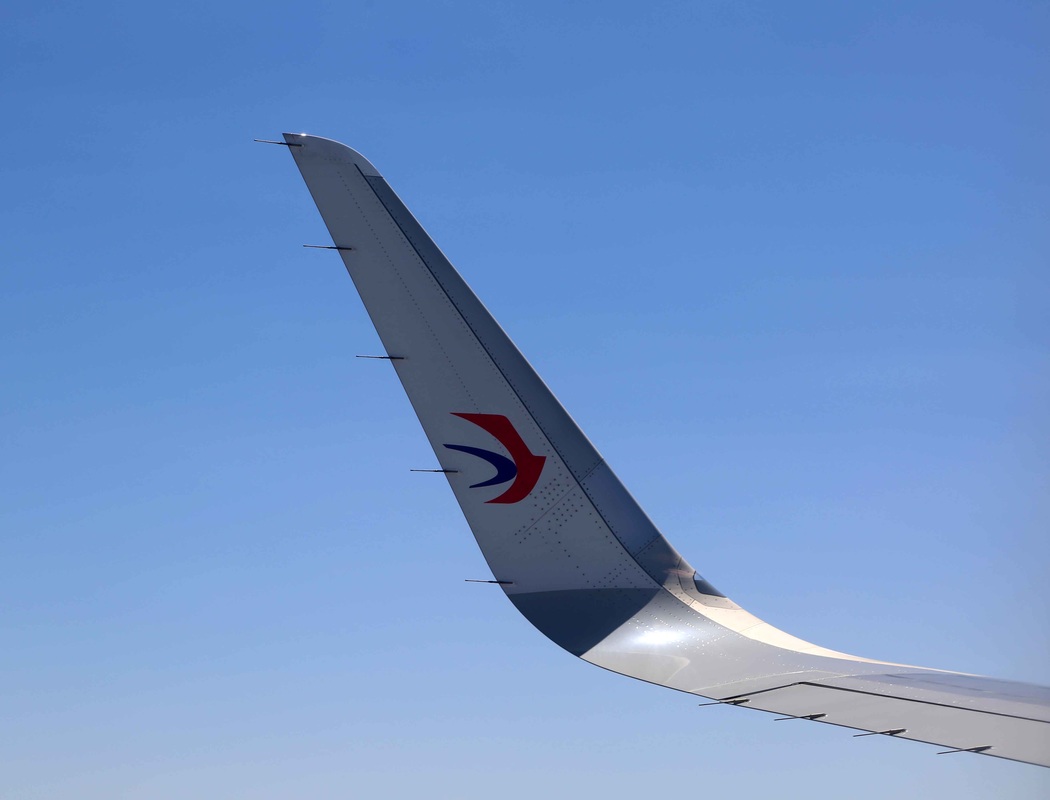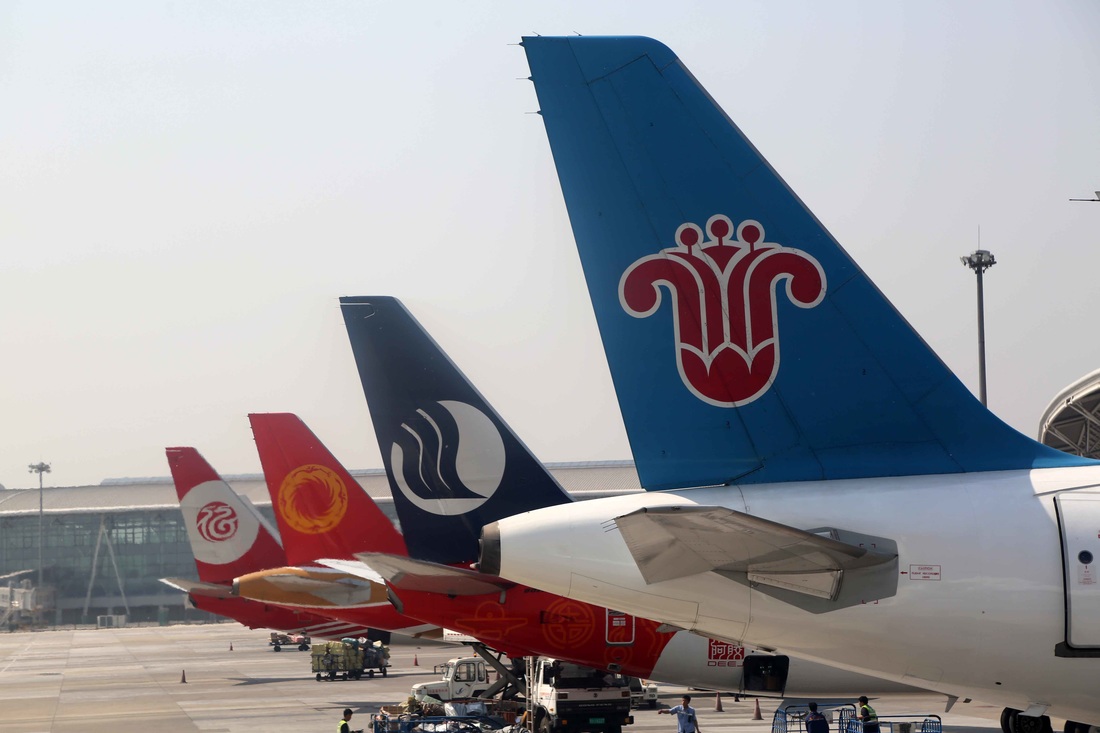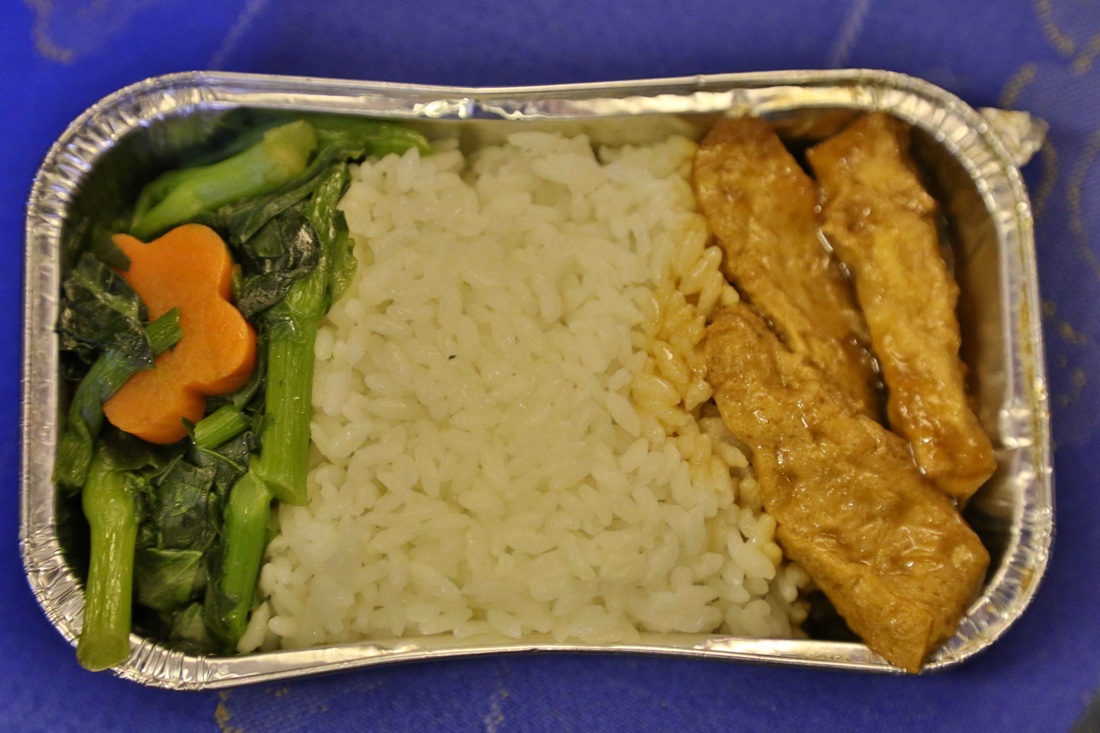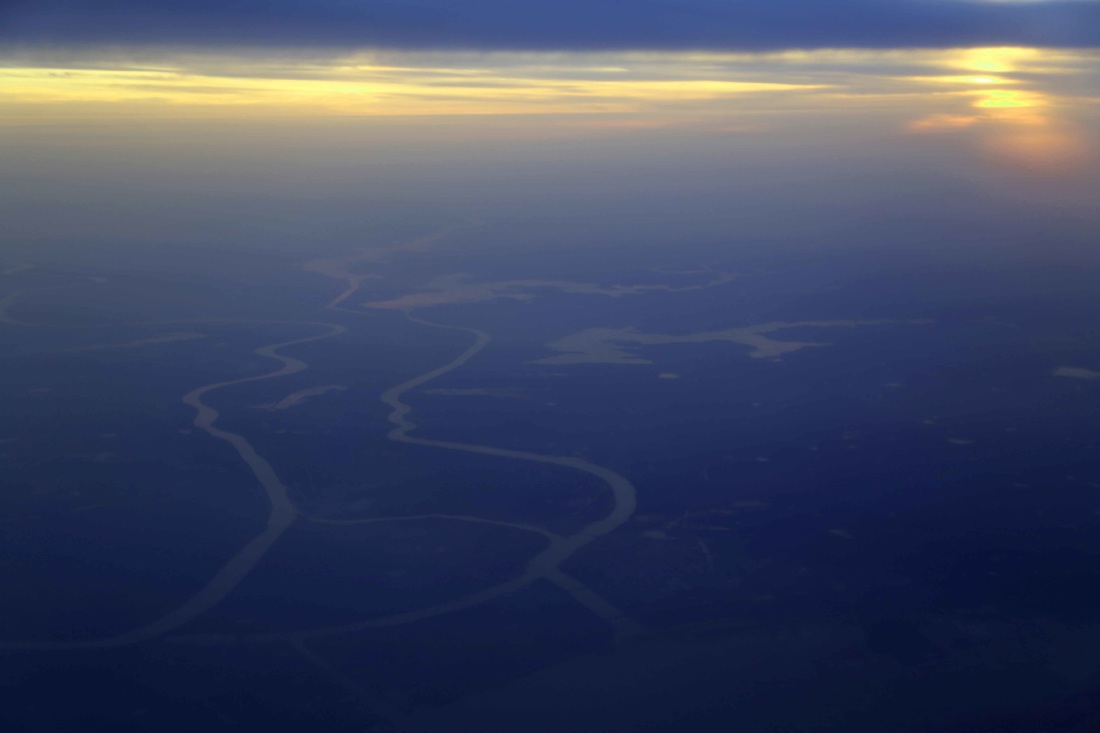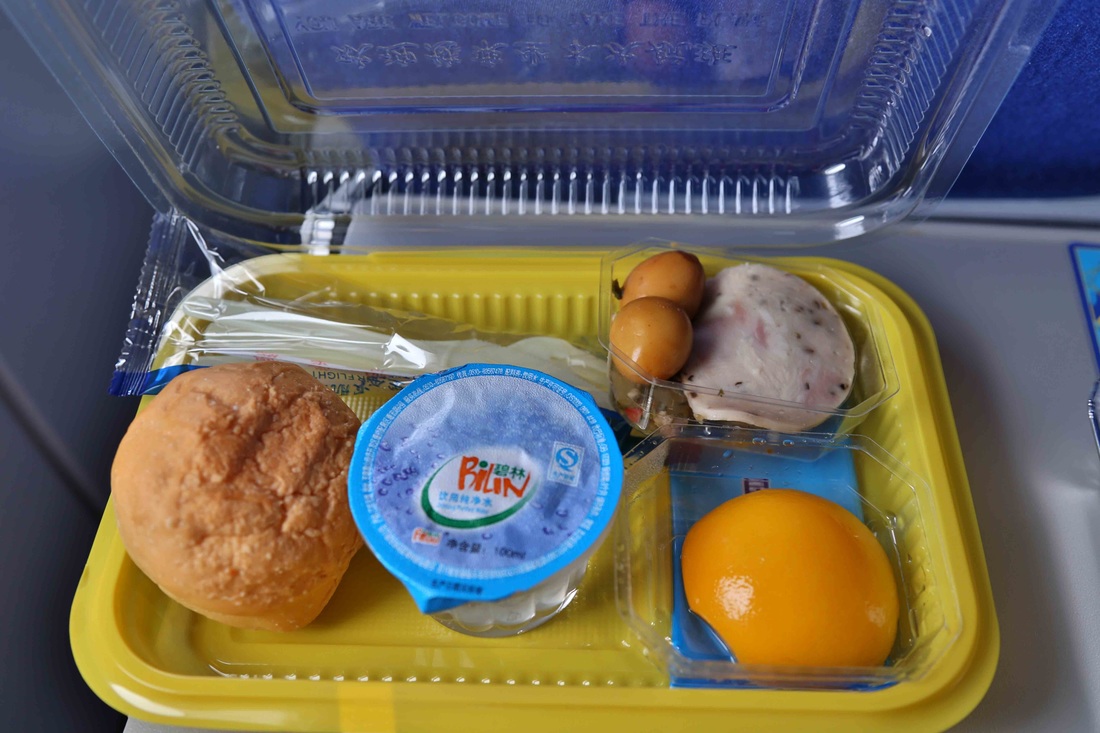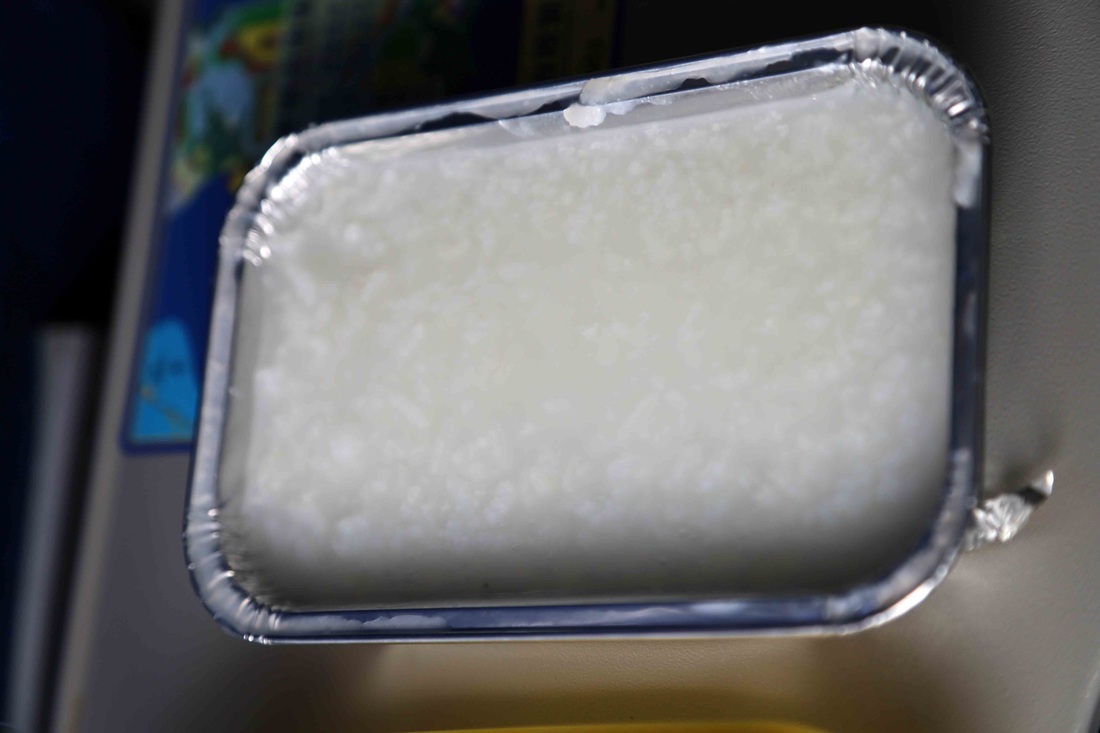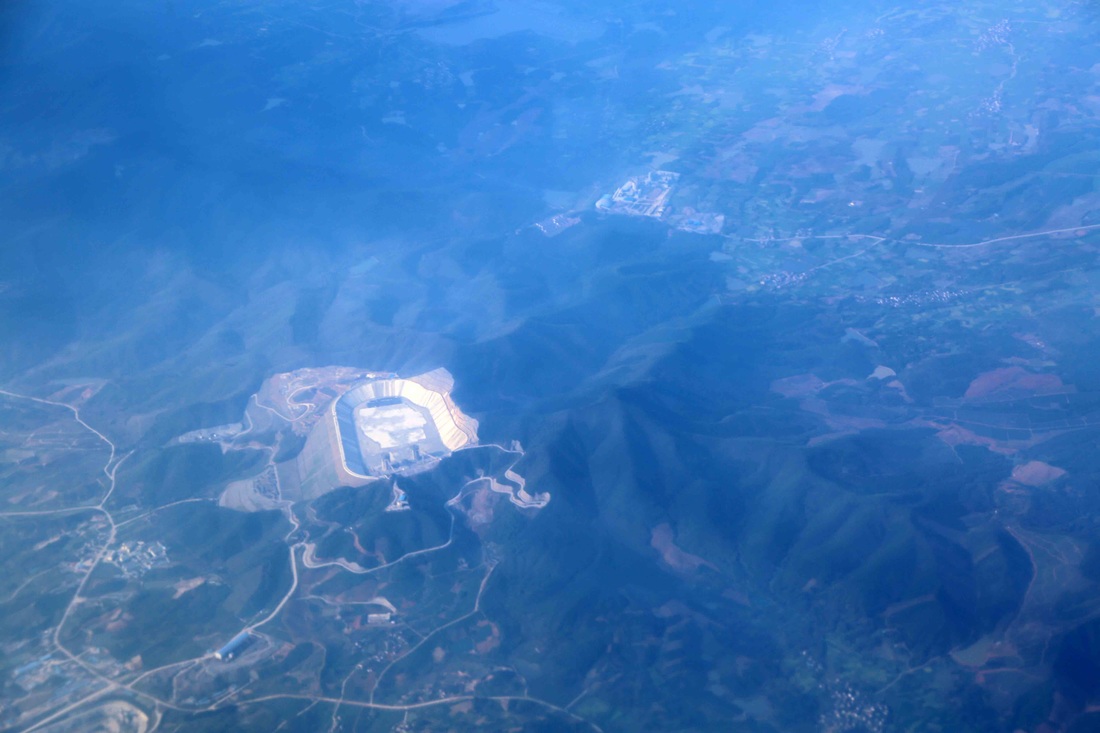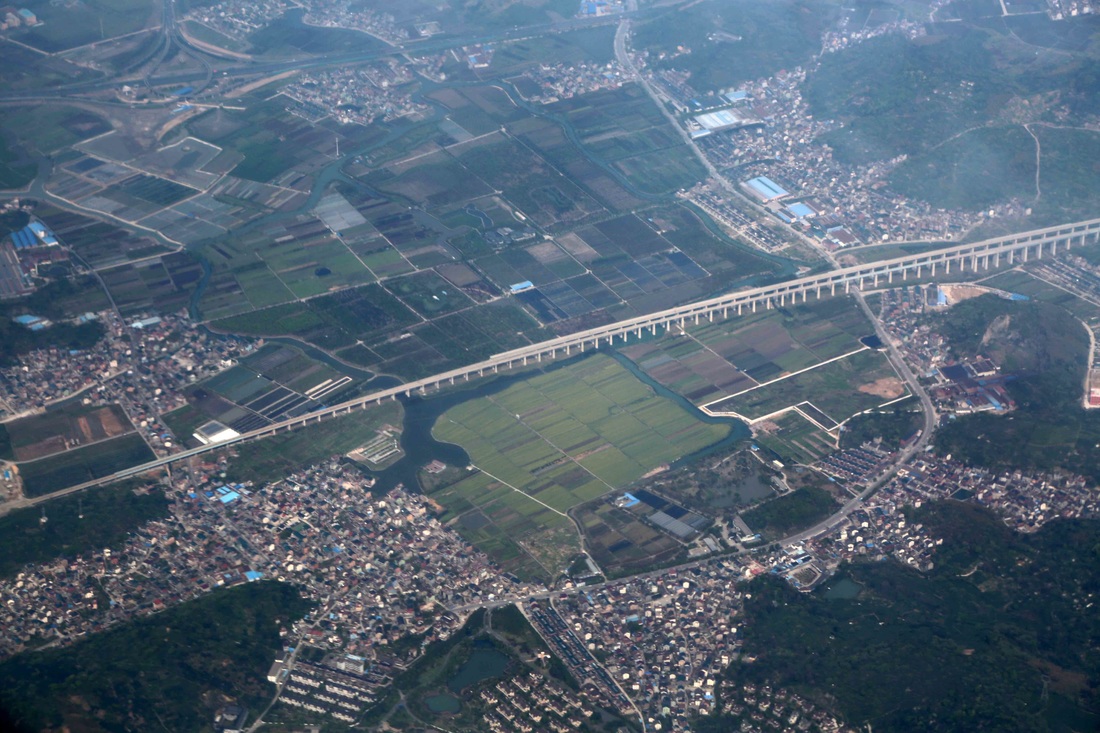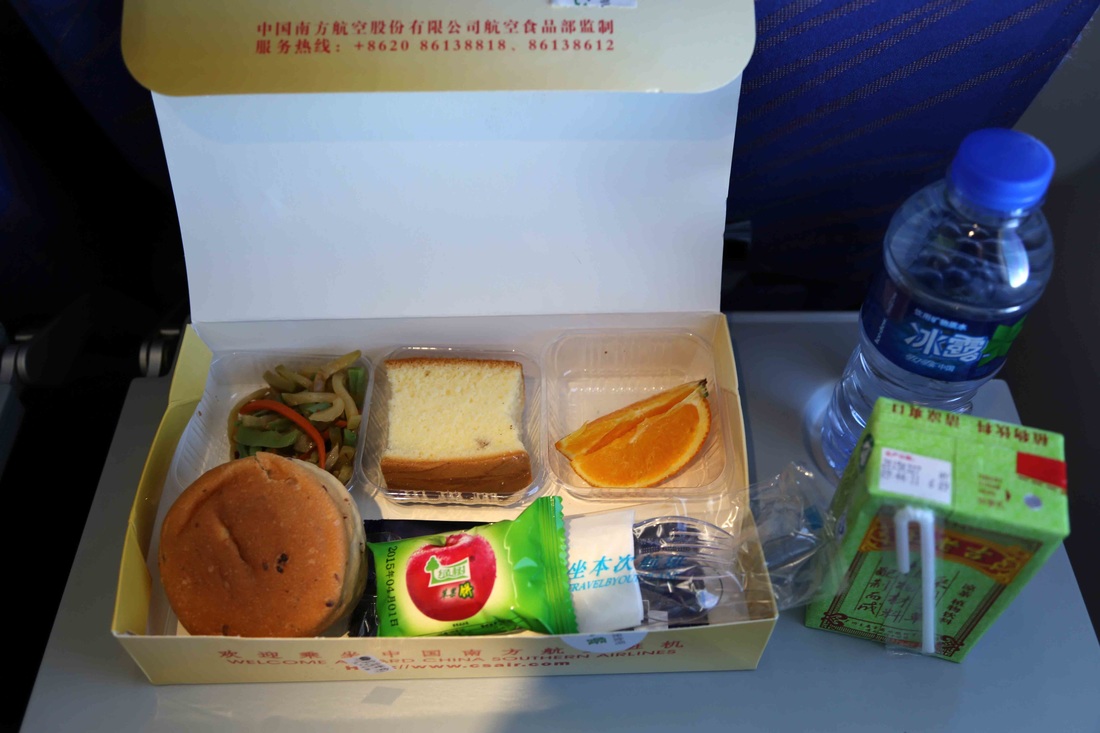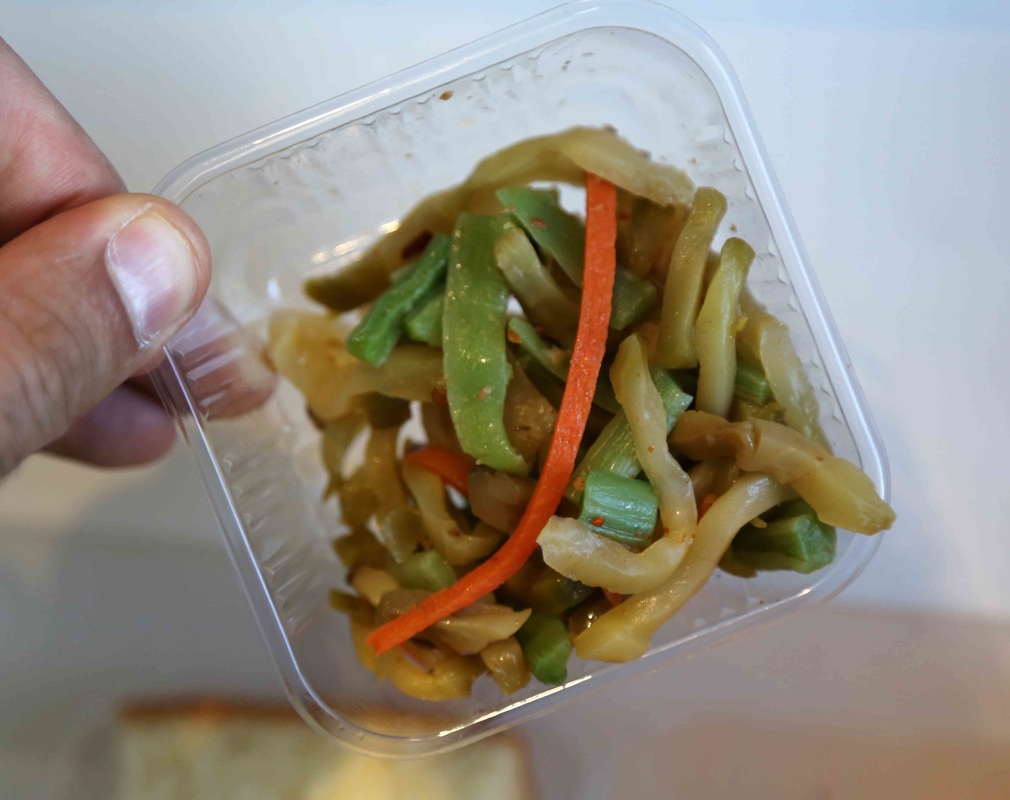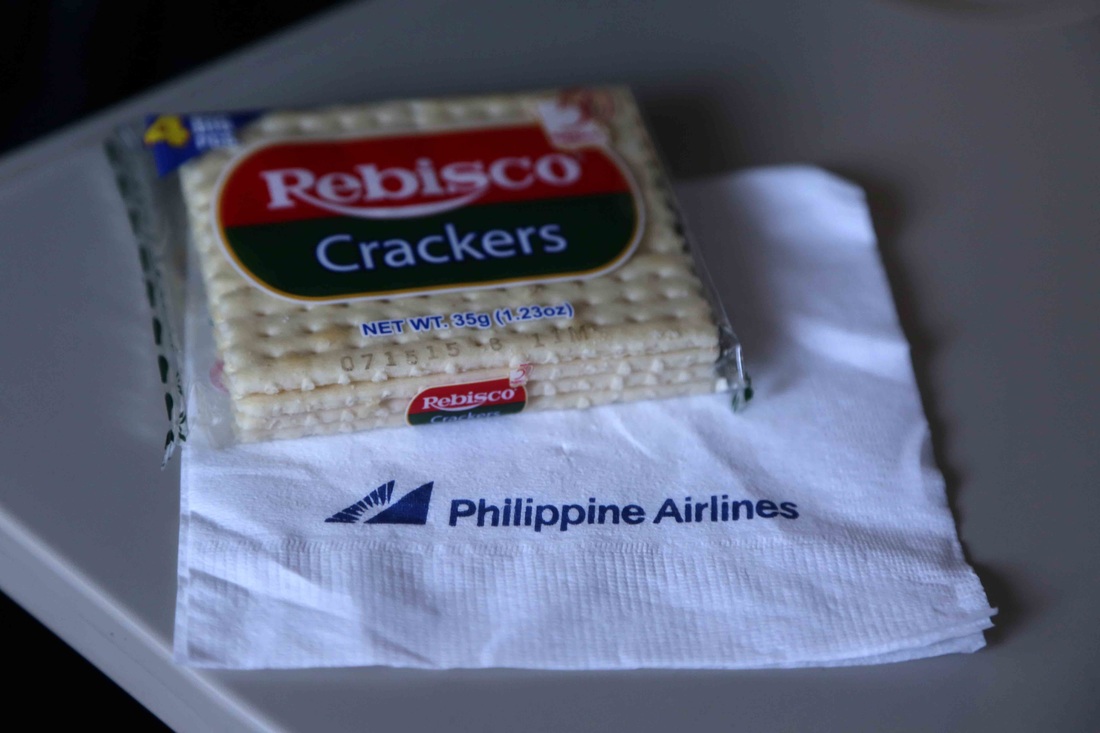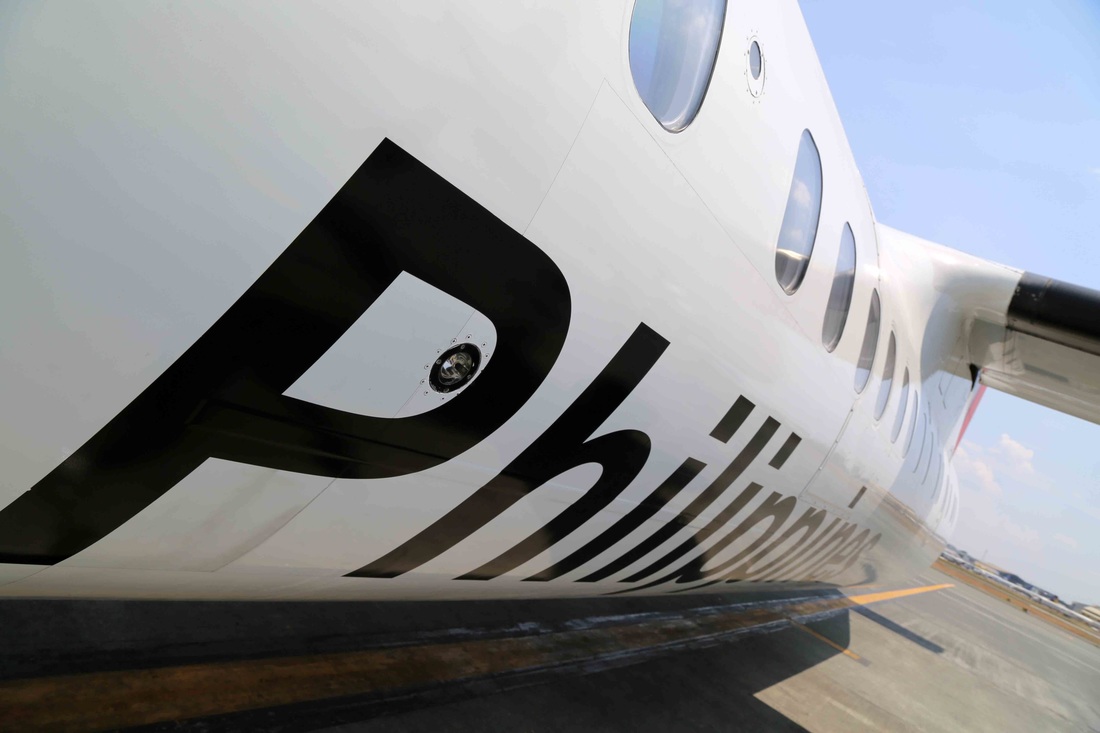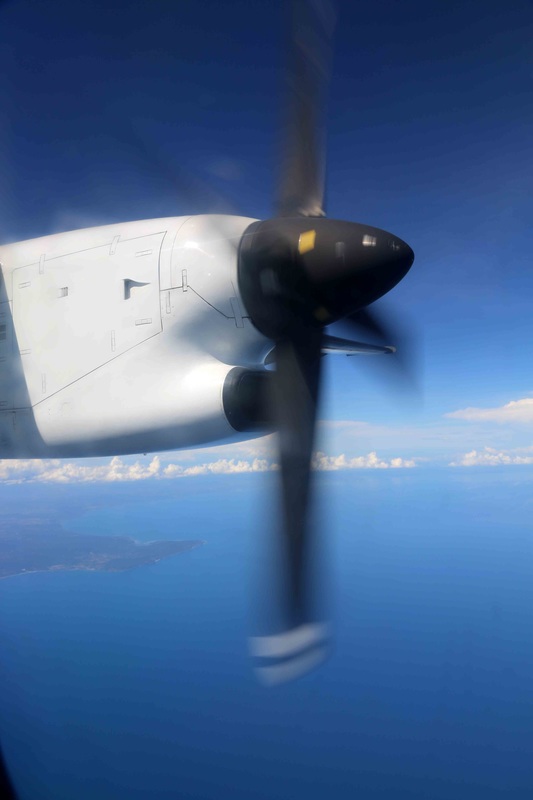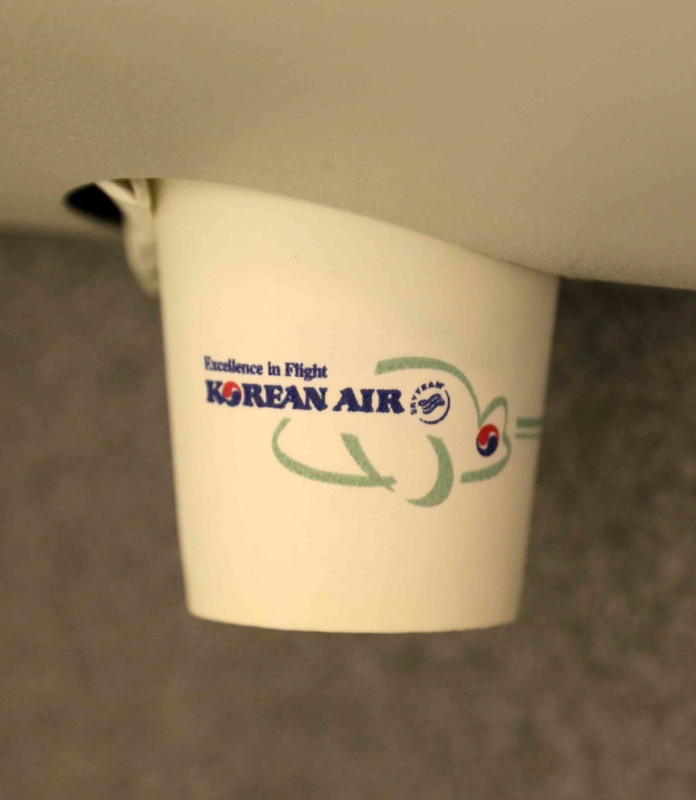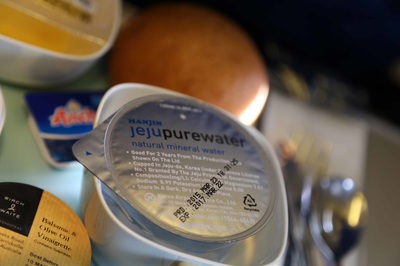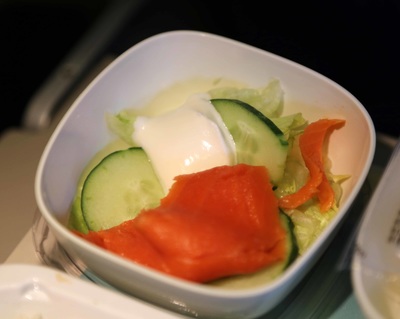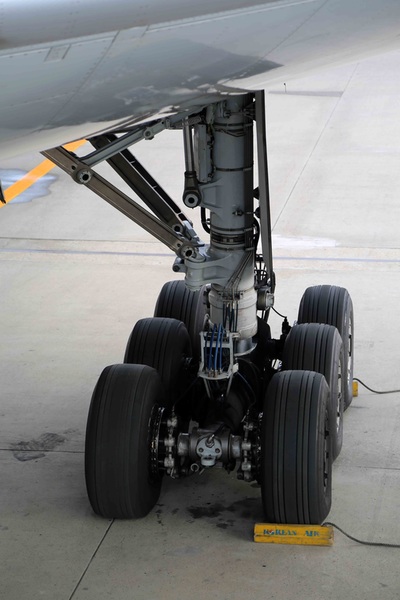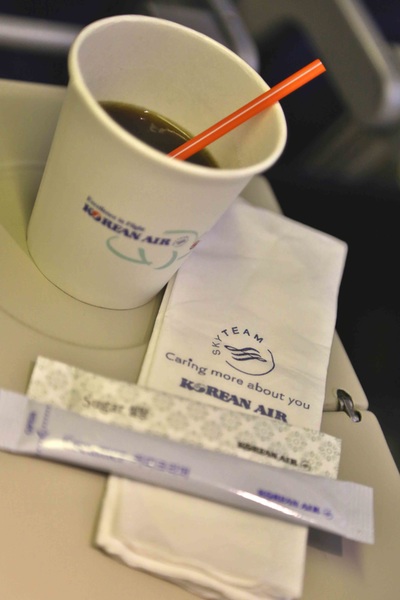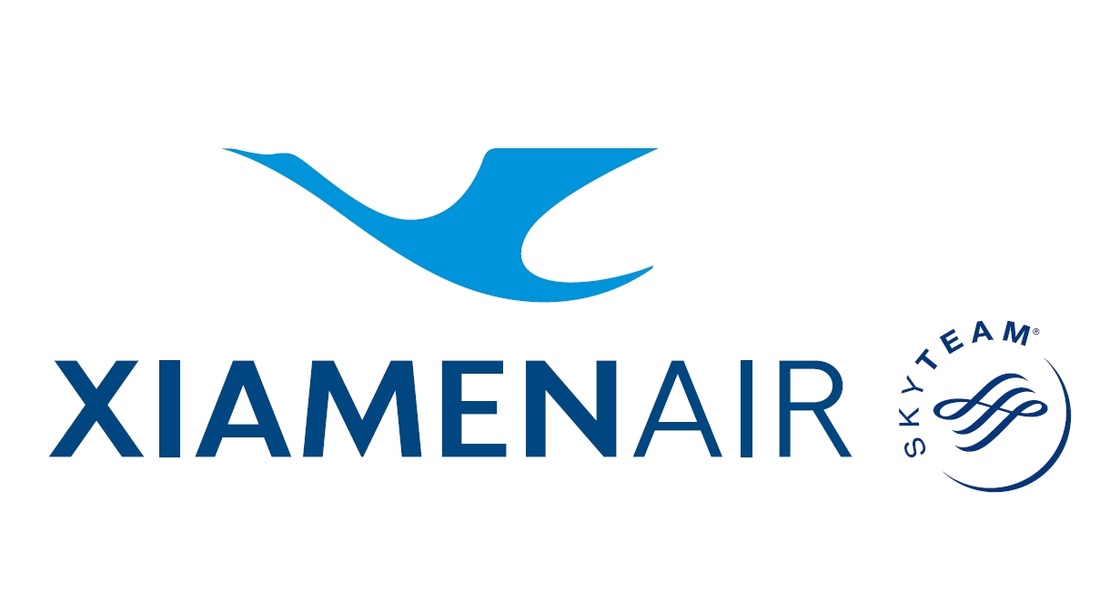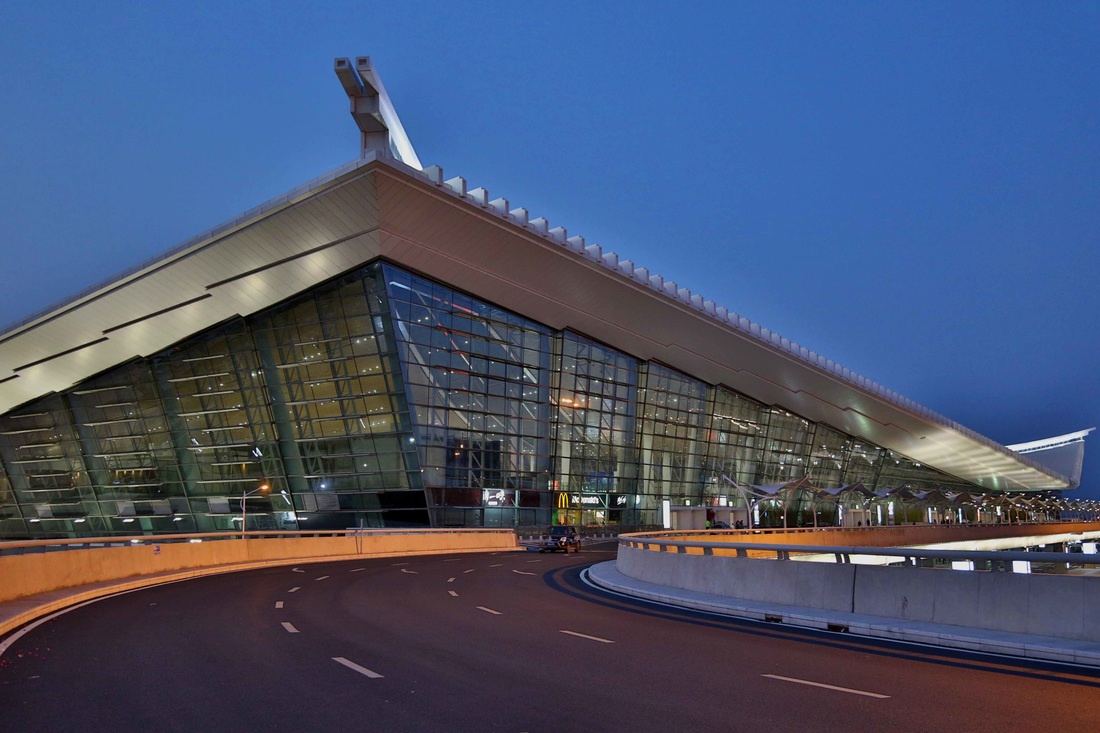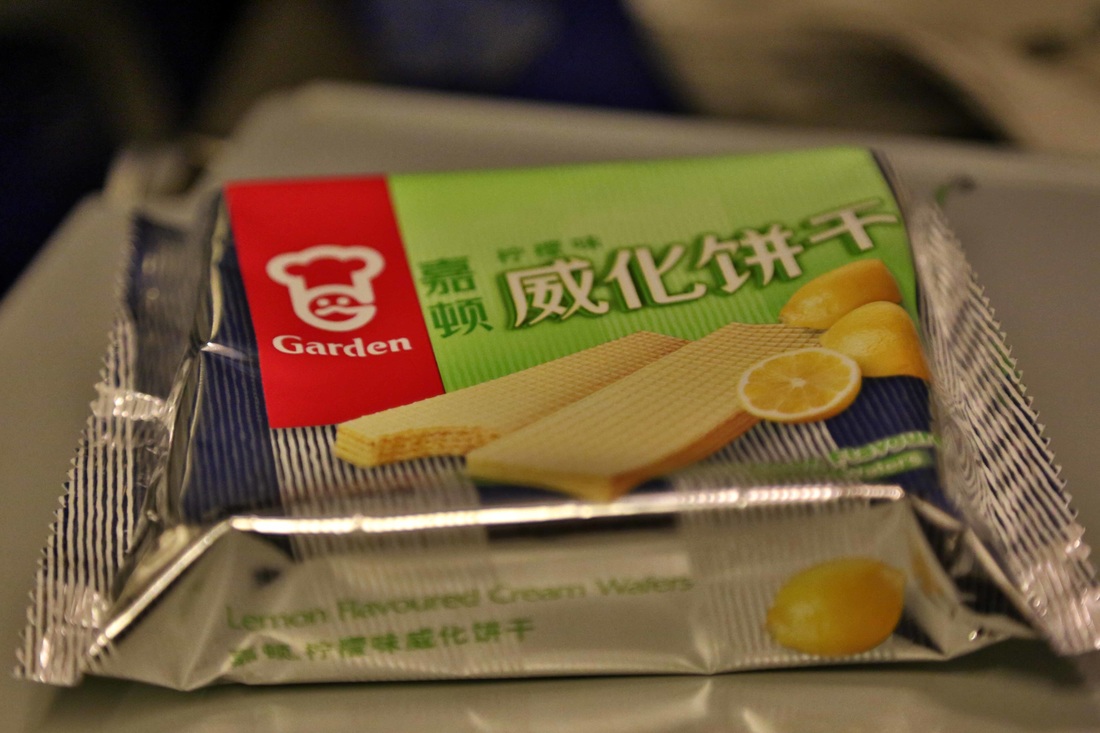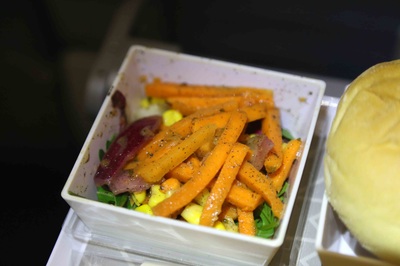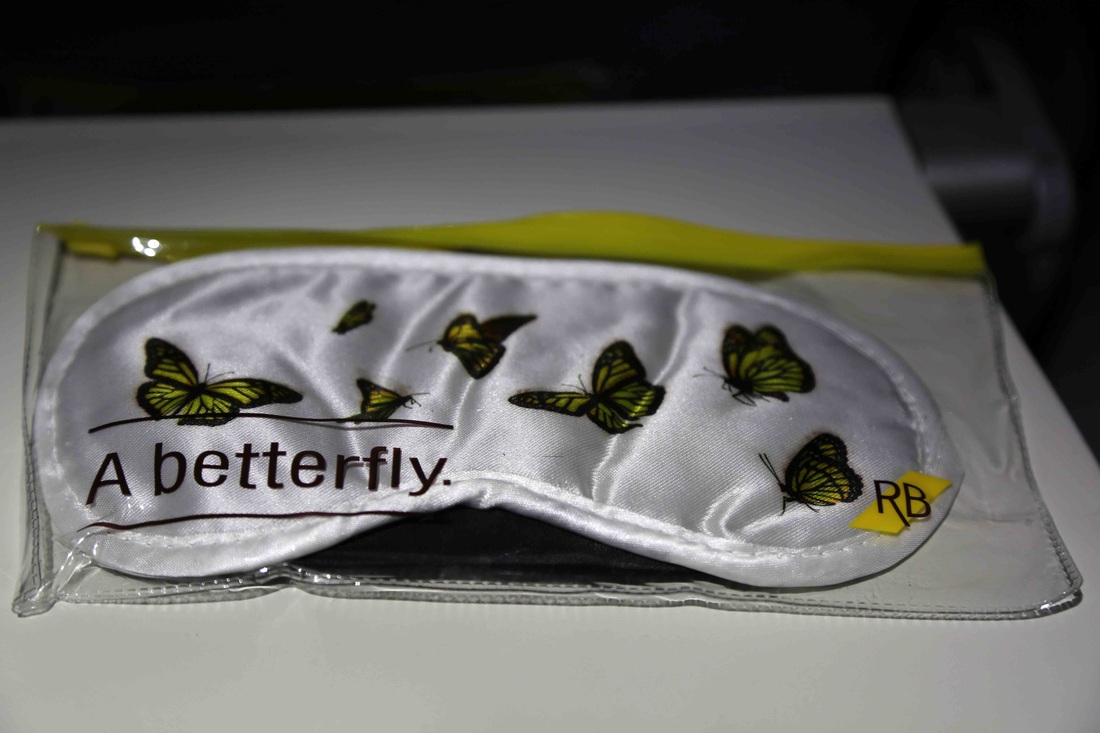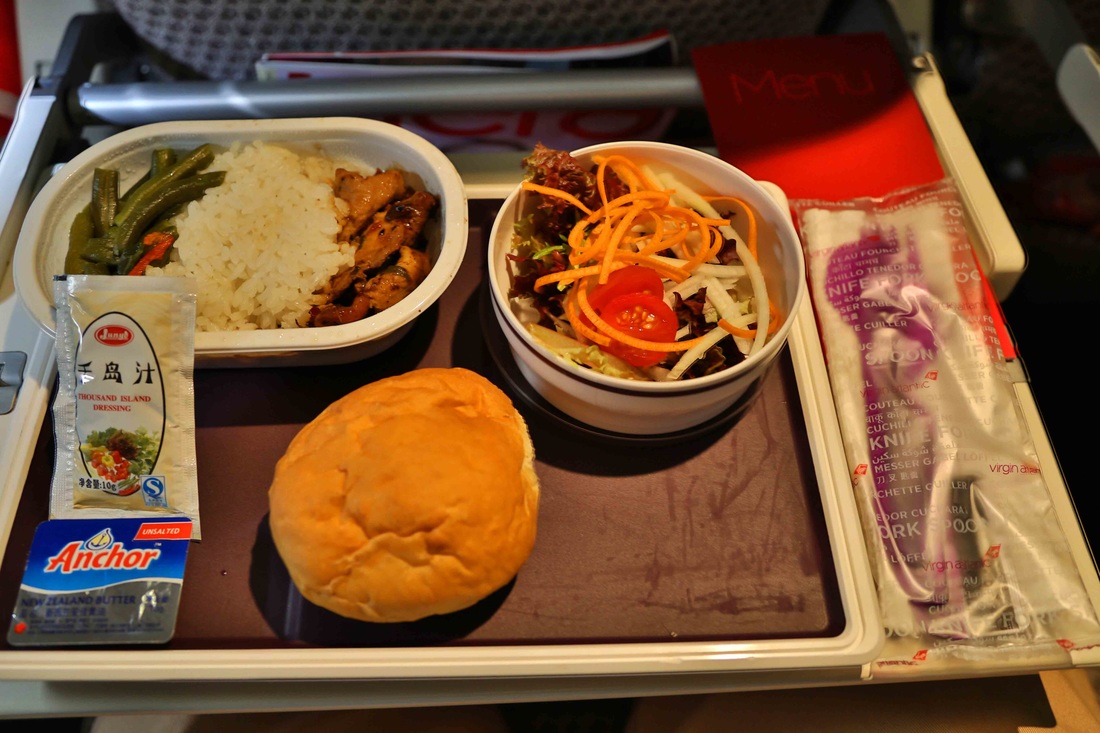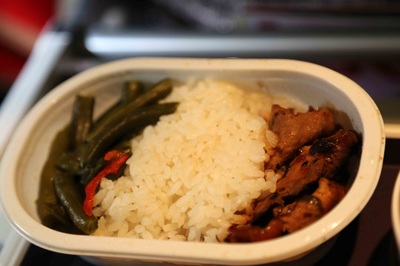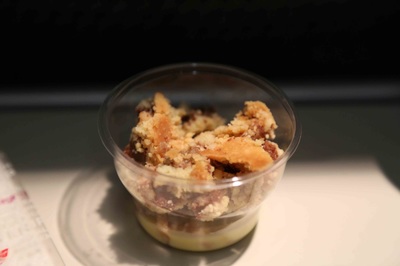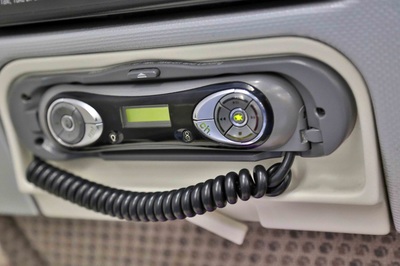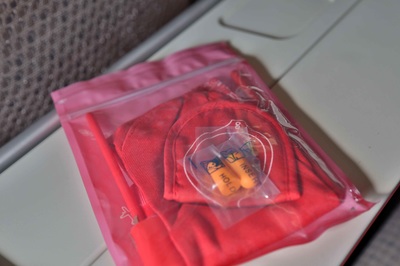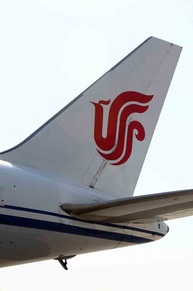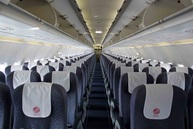|
British Airways is the national flag carrier of the United Kingdom, and operates full international and domestic scheduled air services for the carriage of passengers, freight and mail and the provision of ancillary services. British Airways operates to 183 destinations around the world with a fleet of 292 aircraft. British Airways are one of the world’s leading scheduled premium international airlines. Their main principal place of business is Heathrow, one of the world’s premier airport locations, which serves a large geographical area with a comparatively high proportion of point-to-point business. Operating one of the most extensive international scheduled airline route networks, together with our codeshare and franchise partners, British Airways flies to more than 300 destinations worldwide. Route: Geneva International Airport to London Heathrow Departure date and time of flight: 17:25 on August 28, 2015 Flight Number: BA733 Flight duration: One hour and 30 minutes (Includes a 20 minutes hold over Biggin Hill) Cabin: Euro Traveller (Economy Class) Aircraft type: Airbus A319 (44 in service) Punctuality of the flight: The flight departed on time from Geneva International, but (as always) had to hold for around 20 minutes over Biggin Hill in the South East of London before landing on runway 27 Left at Heathrow Airport. The evening view of London is amazing. Clear views of the traffic jams on the M25, as well as Canary Wharf and other landmarks look stunning. I managed to capture a lovely shot of Biggin Hill as we circled the airport in South East London. Heathrow is such a busy airport that flights have to stack up at four main points around London- Biggin Hill (SE London), Lambourne (NE London), Bovingdon (NW London) or Ockham (SW London). Any baggage issues: No issues- the bags arrived on time and in one piece. Comments on the check-in: This was my first time I had travelled through Geneva Airport since 2009. In those days I used to fly every week between London and Geneva because of my job. No issues at check-in. Geneva Airport still looks the same and nothing has changed in all these years. Everything went perfectly smoothly at Geneva Airport. Just like the rest of the Swiss culture- everything is on time and in an orderly manner. No hustle and bustle. Comments regarding the pre-meal service: Choice of drinks (standard- tea, coffee, orange juice, apple juice, lemonade or coca cola), and wine. Comments regarding the first meal: Just cold sandwiches and rolls were offered for this very short-haul flight. Comments regarding the drinks service: A second round of drinks were offered after the snacks. Comments regarding the in-flight snacks (if any): None Comments regarding the second meal (if any): None Comments on the in-flight system (if any): None Comments of professionalism of the cabin crew: The cabin crew were very professional and polite. Just a normal flight, without any incidents. Improvements that could be made: This was a great flight, and on such a short flight, it is difficult to find any faults. Everything was just fine. Comments on the interior of the aircraft (including seat comfort): The Airbus A319 is part of the A320 series of aircraft are used by British Airways for their short to medium haul routes within Europe. The aircraft is used from both Gatwick and Heathrow. The interior is a standard 3-3 for Economy and 2-2 configuration for Business Class passengers. The Business and Economy Class seats are all leather in navy blue colour (typical of the signature for British Airways). Overall rating 1-10 (worst-best):10  Caught while landing on Heathrow's runway 27L....not easy to get a shot while coming into a windy touchdown at 145knots! BA's Concorde, reg G-BOAB, first flew on 18 May 1976 from Bristol Filton. Her last flight was a positioning ride on 15 August 2000 as "Speedbird Concorde Bravo Papa 002" from New York JFK to London Heathrow after flying 22,296 hours. Ever since then she has sat quietly at Heathrow, admiring all the new boys and girls on 27L in front of her. Beautiful bird!: Photo Copyright Navjot Singh British Airways is the national flag carrier of the United Kingdom, and operates full international and domestic scheduled air services for the carriage of passengers, freight and mail and the provision of ancillary services. British Airways operates to 183 destinations around the world with a fleet of 292 aircraft. British Airways are one of the world’s leading scheduled premium international airlines. Their main principal place of business is Heathrow, one of the world’s premier airport locations, which serves a large geographical area with a comparatively high proportion of point-to-point business. Operating one of the most extensive international scheduled airline route networks, together with our codeshare and franchise partners, British Airways flies to more than 300 destinations worldwide.
Route: London Heathrow International Airport to Geneva International Airport Departure date and time of flight: 07:05 on August 27, 2015 Flight Number: BA730 Flight duration: One hour and 30 minutes Cabin: Euro Traveller (Economy Class) Aircraft type: Airbus A319 (44 in service) Punctuality of the flight: The flight departed around 30 minutes late from Heathrow Airport’s runway 27 left due to heavy morning traffic waiting to depart. Just after take-off from Heathrow, and as we turned left to head towards the English coast, we were greeted with a wonderful view of Farnborough Airfield from around 4,000 feet. Even more stunning was the view of Mount Blanc and the countryside around Lake Genève as we approached Geneva. Any baggage issues: No issues- the bags arrived on time and in one piece. Comments on the check-in: This was my first time I had travelled to Geneva since 2009. In those days I used to fly every week between London and Geneva because of my job. No issues at check-in at Heathrow Terminal 5, which is dedicated for British Airways flights. The morning flight was delayed due to heavy showers and the morning rush-hour at Heathrow. Comments regarding the pre-meal service: Choice of drinks (standard- tea, coffee, orange juice, apple juice, lemonade or coca cola), and wine. Comments regarding the first meal: Lemon flavoured biscuits by Island Bakery and nuts and dried fruit by Forest Feast. Comments regarding the drinks service: A second round of drinks were offered after the snacks. Comments regarding the in-flight snacks (if any): None Comments regarding the second meal (if any): None Comments on the in-flight system (if any): None Comments of professionalism of the cabin crew: The cabin crew were very professional and polite. Just a normal flight, without any incidents. Improvements that could be made: This was a great flight, and on such a short flight, it is difficult to find any faults. Everything was just fine. Comments on the interior of the aircraft (including seat comfort): The Airbus A319 is part of the A320 series of aircraft are used by British Airways for their short to medium haul routes within Europe. The aircraft is used from both Gatwick and Heathrow. The interior is a standard 3-3 for Economy and 2-2 configuration for Business Class passengers. The Business and Economy Class seats are all leather in navy blue colour (typical of the signature for British Airways). Overall rating 1-10 (worst-best): 10 Malaysia Airlines is the national flag carrier of Malaysia and is the largest airline in Malaysia based on fleet size, international destinations and international flights. The airline serves 60 destinations, both international and domestic. It is among the top 20 airlines in the world in terms of passengers carried and is also the top-ranked international cargo airline.
At the time of writing, Malaysia Air operates a fleet of 86 aircraft, including 6 Airbus A380 and 56 state-of-the-art Boeing 737NG aircraft. This was the first time I flew with Malaysia Airlines. I was on the flight from Hong Kong Chep Lap Kok Airport to Kuala Lumpur International Airport on Malaysia Airlines’ Boeing 737-800NG to check out their Economy Class seats! Route: HONG KONG (HKG) to KUALA LUMPUR INTL. AIRPORT (KUL) Departure date and time of flight: 08:45am, August 2015 Flight number: MH79 (ICAO call sign: “Malaysian”) Flight duration: 3h 55m Class: ECONOMY CLASS Aircraft type: BOEING 737-800NG (56 in service) Unit cost of each Boeing 737-800NG: US$72.5 million (2015) Aircraft registration: 9M-MXL (First flight 26th October 2012) Engine Type: Two x CFMI CFM56-7B26 Aircraft Serial Number: 40139 LN: 4246 Frequent flyer programme: Malaysia Airlines' frequent flyer programme is called Enrich by Malaysia Airlines (Enrich). Enrich comprises a variety of airlines, banks, credit-card issuers, hotels and retailers around the world. Seat configuration for this aircraft: Business Class: 16 angle-flat seats in a 2-2 configuration Economy Class: 150 seats in a 3-3 configuration Punctuality of the flight: Departed bang on time, and landed 20 minutes ahead of schedule. Was greeted with a final view of Shenzhen as we departed Hong Kong – quite a sad moment as the city means so much to me and I will no doubt miss living there. Any baggage issues: No issues regarding the baggage. For Economy Class, Malaysia Airlines have a checked baggage allowance of 23 kg total for all routes excluding transatlantic routes, and upto 40kg for Business Class. All routes have a carry-on allowance of one piece not exceeding 7 kg (50x37x25 cm). Click here to see more details Comments on the check-in staff and flight route: It is always a pleasure when flying from Hong Kong. The previous night I had stayed at the Hong Kong Regal Airport, voted one of the best airport’s in the world. During approach into Kuala Lumpur, passengers have to contend with turbulence due to the localised hot air rising from the canopy. Kuala Lumpur airport is surrounded by lush green forests. We had a few bumps, and suddenly most of the passengers went “Ohhhh”. Considering that Malaysia Airlines unfortunately experienced two crashes in 2014, it was quite a tense moment indeed, where you think “Oh dear lord, I hope not this time!” I honestly thought that the turbulence was the cause of the sudden smoothing of the approach as their planes cross into the airport. Comments regarding the pre-flight service: Upon embarking the aircraft, passengers in Business Class and Economy Class were offered welcome drinks consisting of fresh orange juice, fresh apple juice, mineral water (champagne, wines in Business Class only). The cabin crew are truly one of the best trained I have met on any other airline. Customer comes first and Malaysia Airlines truly define the meaning of a five-star service. Comments regarding the pre-meal service: Passengers in Economy Class were offered a packet of fresh pretzels packed in Malaysia Airlines branded packets, and a choice of drinks from the trolley service. The cabin crew were polite and friendly. Even though this flight was full, the cabin crew paid full attention each and every customer instead of just passing the meal to passengers like they do on some other airlines. I just resorted to drinking plenty of bottled water. Though they may sound very tempting, however, alcohol and coffee are not good to drink during a flight as it just dehydrates you. Water is the best. Comments regarding the first meal: The meal tray arrived at around 30 minutes after take-off from Hong Kong. There were two options for the main meal:
I opted for the fish with rice and vegetables. The food was fresh, and better than what you get on most other airlines in Economy Class. This is why Malaysia Airlines is different because they provide a fine dining experience in all classes of travel- one that is easily comparable to going to a five-star restaurant. You get what you pay for, and Malaysia Airlines does not fail. Accompanying the main dish was a bowl of freshly cut salad with carrot shredding, tomato, cucumber and shredded lettuce all in one action packed bowl!). It’s ridiculously good to have some crunchy salad to accompany a slightly heavy yet tasty dish as I had. Orange juice and mineral water were provided by Malaysian company Spritzer. For dessert, Malaysia Airlines provided a bowl of sweet sago rice. In Economy Class, Malaysia Air still provides plastic cutlery to the passengers. Comments regarding the after meal drinks and in-flight snacks: Plenty of fresh water, coffee and tea are offered in lovely Malaysia Airlines branded paper cups (that can be recycled) were offered. Comments regarding the second meal: None. There was no second meal. Comments on the in-flight entertainment system: Almost all 737-800s have personal AVOd screens featuring a wide variety of music and audio options. All other 737-800s have standard audio options. Almost all 737-800s have personal AVOD screens for all seats. Business Class has 10.6" screens while Economy Class has 9" screens. All other 737-800s have overhead screens. There is an 110v AC power outlet at every Business Class seat. Comments of professionalism of the cabin crew: The cabin crew were very hospitable, and proud to work for Malaysia Airlines. There was a genuine smile on every crew members face and you could tell that they really enjoyed their job. There was a real sense of teamwork in the cabin. As a customer (or passenger) it is easy to tell if the cabin crew are not getting along with each other (it does happen like any other job!), and on this flight I could see that everyone was in a joyous mood. If there was something I wanted or a question I had, then no one objected to it. Instead, they tried their best to help me as much as they could. The senior purser was just gem of a person. The whole flight experience was like magic, and everything seemed to go smoothly. So, yes the world can be ideal sometimes. Comments on the interior of the aircraft (including seat comfort): Economy class is available on all of Malaysia Airlines' fleet. Seats feature a pitch of 33-34 inches and width of 17-17.25 inches, while the newer fleets such as the Airbus A380, Airbus A330-300 and Boeing 737-800 feature seat pitch of 30-32 inches and width of 17-17.5 inches. On the Boeing 777-200, it has a 6.5" personal TV located behind each seat, and a footrest located below the seat in front, the leased 737-800 has no personal TV but overhead TV's located in the aisles of the plane and feature a seat pitch of 29-30 inches. The new A330-300 as well as the new 737-800 all have the new Select 3000i. In 2010, economy class was voted the World's Best Economy Class at the 2010 World Airline Awards by Skytrax. Seatback meal tray tables are available except in the front row which is an 'in-arm' table. Individual overhead reading lights. Seat cover: Woolen. Headrest cover: Paper disposable. Seats are arranged as 3-3. Malaysia Airlines logo and livery: The original corporate logo was designed by Dato' Johan Ariff, and was introduced on 15 October 1987, retaining the essence of the moon kite, with a sheared swept-back look. Along with the new corporate logo, a new type style - MALAYSIA, was created. It is italicised to slant parallel with the logo to accentuate speed as well as direction. Within this corporate typestyle, the letters MAS bear red clippings to denote the initials of the statutory name of the airline, Malaysian Airline System (MAS), and were added after the original design was rejected by former Prime Minister Mahathir Mohammad. The introduction of blue to the original red logo has national significance. The red and blue divides equally in the middle to denote equilibrium. On 8 March 2012, Malaysia Airlines unveiled a new logo featuring an all-blue moon kite and livery for its Airbus A380 fleet. Months later, the corporate logo of red and blue was refreshed. The new moon kite logo faces from left to right, as it did in the original 1971 logo, and its tails have been extended. The wordmark has also been modernised with a new typeface and the word "airlines" is now presented in lowercase. On 1st September 2015, Malaysia Airlines rebranded as Malaysia Airlines Berhad but for the time being remained to use the same logo and branding Overall rating 1-10 (worst-best): 10 Route: Chongqing International Airport to Shenzhen Airport
Departure date and time of flight: 17:20 on 10th August 2015 (delayed by five hours, and arrived at 2am into Shenzhen) Flight number: QQ8141/CZ8141 (code share with China Southern, but using a Chongqing Airlines plane) Flight duration: 45 minutes Class: Economy Class Aircraft type: Airbus A321 Punctuality of the flight: The flight departed around five hours late, and arrived at around 2am in Shenzhen Top Tip: Try not to fly when you have a cold. I made the fatal mistake of doing so, and ended up with the worst ear blockage ever. As soon as we started our decent into Chongqing, my hearing just went, and with exceedingly painful results. The consequences were that I sought to get a doctor’s advice as soon as we landed in Chongqing- and that didn’t help either (because I had a cold). It also didn’t help that I had a connecting flight to Shenzhen the same evening, and two days after that I was due to fly to Kuala Lumpur, and then Kathmandu (high-altitude again!). The only solution was to go to the hospital in Shenzhen and get my ears cleared using sound therapy, and to take a dose of antibiotics throughout my time in Kuala Lumpur and Kathmandu (before flying long-haul to London). Any baggage issues: I had a large backpack, weighing around 12kg, which I checked-in as hold luggage. This was the first time I had taken a trip with a backpack, and without much hand luggage. Comments regarding the pre-meal service: None Comments regarding the first meal: Just a bottle of water, and two plain buns. Comments regarding the drinks service: Selection of various drinks. Comments regarding the in-flight snacks (if any): None Comments regarding the second meal (if any): None Comments on the in-flight system (if any): None Comments on the interior of the aircraft (including seat comfort): This Airbus A321 aircraft has a seat configuration of 3-3 with an all Economy Class seat set up. Route: Jiuzhaigou Huanglong Airport to Chongqing International Airport
Departure date and time of flight: 14:45 on 7th August 2015 Flight number: PN Flight duration: 45 minutes Class: Economy Class Aircraft type: Airbus A319 Punctuality of the flight: The flight departed on time and landed in around 40 minutes. What was truly remarkable was the temperature change and the environmental change within such as short amount of time. From 2 degrees Celsius to just under 30 degrees Celsius. Jiuzhaigou is the third highest airport in China, with the elevation of the runway at around 3,500 meters above sea-level. Top Tip: Try not to fly when you have a cold. I made the fatal mistake of doing so, and ended up with the worst ear blockage ever. As soon as we started our decent into Chongqing, my hearing just went, and with exceedingly painful results. The consequences were that I sought to get a doctor’s advice as soon as we landed in Chongqing- and that didn’t help either (because I had a cold). It also didn’t help that I had a connecting flight to Shenzhen the same evening, and two days after that I was due to fly to Kuala Lumpur, and then Kathmandu (high-altitude again!). The only solution was to go to the hospital in Shenzhen and get my ears cleared using sound therapy, and to take a dose of antibiotics throughout my time in Kuala Lumpur and Kathmandu (before flying long-haul to London). Any baggage issues: I had a large backpack, weighing around 12kg, which I checked-in as hold luggage. This was the first time I had taken a trip with a backpack, and without much hand luggage. Comments regarding the pre-meal service: None Comments regarding the first meal: No food offered. Passengers could buy snacks if they wanted. Comments regarding the drinks service: None Comments regarding the in-flight snacks (if any): None Comments regarding the second meal (if any): None Comments on the in-flight system (if any): None Comments on the interior of the aircraft (including seat comfort): This Airbus A319 aircraft has a seat configuration of 3-3 with an all Economy Class seat set up. The plane was clean and the toilets were clean too. It was not full at all. Not bad a flight after all. The crew were friendly, too. SICHUAN AIRLINES (Chengdu Int. Airport to Jiuzhaiguo Huanglong Airport), AIRBUS A319 (2015-08-07)8/6/2015
Route: Chengdu International Airport to Jiuzhaigou Huanglong Airport Departure date and time of flight: 14:45 on 7th August 2015 Flight number: 3U8607 Flight duration: 40 minutes Class: Economy Class Aircraft type: Airbus A319 Punctuality of the flight: The flight departed on time and landed in around 40 minutes. What was truly remarkable was the temperature change and the environmental change within such as short amount of time. From 30 degrees Celsius to just under 2 degrees Celsius. Jiuzhaigou is the third highest airport in China, with the elevation of the runway at around 3,500 meters above sea-level. The views of the Min mountains are truly spectacular. Worth for the short flight! Top Tip: If you do come here and you have forgotten to bring your thermal jacket (it can be cold here in the summer, too, because of the high elevation, then don’t worry because high-quality thermal jackets are available at the arrivals hall. You can get a very nice jacket for around 70RMB (approx. £7, US$12)- I can guarantee that the same jacket, if sold in the UK for example, would be available for around US$60 at least. Any baggage issues: I had a large backpack, weighing around 12kg, which I checked-in as hold luggage. This was the first time I had taken a trip with a backpack, and without much hand luggage. Sichuan Airlines have their own dedicated terminal building at Chengdu Airport, and because the airport is so big, they have airport guides on roller-coasters and segways! Comments regarding the pre-meal service: None Comments regarding the first meal: Just a bottle of water Comments regarding the drinks service: None Comments regarding the in-flight snacks (if any): None Comments regarding the second meal (if any): None Comments on the in-flight system (if any): None Comments on the interior of the aircraft (including seat comfort): This Airbus A319 aircraft has a seat configuration of 3-3 with an all Economy Class seat set up. The plane was clean and the toilets were clean too. It was not full at all. Not bad a flight after all. The crew were friendly too. Route: Zhangjiajie International Airport to Chengdu International Airport
Departure date and time of flight: 15:00 on 5th August 2015 Flight number: CA4378 Flight duration: 1 hour Class: Economy Class Aircraft type: Airbus A320 Punctuality of the flight: The flight departed on time and landed on time. Zhangjiajie airport is located on the banks of the enormous Tianmen Mountain and is surrounded by mountains from all corners. Zhangjiaje must be one of the most beautiful airports I have been to in China. Tianmen Mountain provides a magnificent backdrop, and on a clear day you can clearly see the peak summit (likewise, the airport and the surrounding area can be seen from the top of the mountain as well). There is only one direct flight a week from Zhangjiajie to Chengdu. You can take connecting flights if you wish. Any baggage issues: I had a large backpack, weighing around 12kg, which I checked-in as hold luggage. This was the first time I had taken a trip with a backpack, and without much hand luggage. Comments regarding the pre-meal service: None Comments regarding the first meal: Just a bottle of water Comments regarding the drinks service: None Comments regarding the in-flight snacks (if any): None Comments regarding the second meal (if any): None Comments on the in-flight system (if any): None Comments on the interior of the aircraft (including seat comfort): This Airbus A320 aircraft has a seat configuration of 3-3 with an all Economy Class seat set up. The plane was clean and the toilets were clean too. It was not full at all. Not bad a flight after all. The crew were friendly, too. CHINA SOUTHERN AIRLINES (Shenzhen Int. Airport to Zhangjiajie Hehua Airport), AIRBUS A320-2008/1/2015
Route: Shenzhen Baoan International Airport to Zhangjiajie International Airport
Departure date and time of flight: 20:00 on 2nd August 2015 Flight number: CZ3991 Flight duration: 1 hour 30 minutes Class: Economy Class Aircraft type: Airbus A320 Punctuality of the flight: The flight departed on time and landed on time. Zhangjiajie airport is located on the banks of the enormous Tianmen Mountain and is surrounded by mountains from all corners. Coming into land at night is quite an experience for the passengers, and I am sure it is an experience for the pilots, too. The arrivals hall has no security…you get off the plane, and walk to the baggage carousel, collect your bag and off you go! (China is safe, they say…and who’s going to attack a mountain resort!). Any baggage issues: I had a large backpack, weighing around 12kg, which I checked-in as hold luggage. This was the first time I had taken a trip with a backpack, and without much hand luggage. Top Tip: If you are going to be travelling around China for a few days by yourself or even with your family, and if you don’t want to carry all that heavy luggage with you, then you can leave it with the concierge at most decent hotels (provided you are also going to be staying at that hotel!). I stayed at the Vienna Hotel in Shekou (sounds more glamorous than it is – but it does the job…complete with bed bugs!), and they let me to keep my four pieces of large luggage for a week for free. It was a massive weight off my shoulders, as that also contained my laptop. And for once in my life, I did not really dress up to fly (you have the make the effort, right?). Just a pair of track suit bottoms and a selection of quality t-shirts for the five days was sufficient for the trip. This trip to Zhangjiajie, Jiuzhaiguo and Chengdu was to hike and burn the calories and enjoy the single travelling experience. In order to prepare myself for the trip, I punished myself by hiking up Nanshan hill in Shenzhen every day for three-hours at a time to get my body in shape and ready for the hike. Comments regarding the pre-meal service: Just drinks (non-alcoholic), and including tea and coffee. Comments regarding the first meal: A box containing lots of biscuits in all shapes and sizes...as well as a pickle to put on the crackers (who eats crackers with pickles?) Comments regarding the drinks service: A second round of drinks were offered after the meal. No alcohol, but plenty of milk, coffee and tea. Comments regarding the in-flight snacks (if any): None Comments regarding the second meal (if any): None Comments on the in-flight system (if any): None Comments on the interior of the aircraft (including seat comfort): This Airbus A320 aircraft has a seat configuration of 3-3 with an all Economy Class seat set up. The plane was clean and the toilets were clean too. It was not full at all. Not bad a flight after all. The crew were friendly, too. Route: Jinan Yaoqiang Airport to Shanghai Hongqiao Airport
Departure date of flight: May 12, 2015, 10:00am Flight number: MU5572 Flight duration: 1 hour 30 minutes Class: Economy Class Aircraft type: Airbus A321 with Sharklets Punctuality of the flight: This short-haul flight departed on time from Jinan. Any baggage issues: No issues- I only had hand luggage. Comments on the check-in staff and any issues: No check in issues. Everything went perfectly smoothly at check-in at Jinan Airport. The airport is relatively tiny compared to other airports in second and third tier Chinese cities. Comments regarding the pre-meal service: Herbal Chinese tea, orange juice and some other drinks, including tea and coffee. Comments regarding the first meal: For this short-haul flight, we were served with a couple of buns, including a muffin and a packet of dry roasted peanuts. Comments regarding the drinks service: A second round of drinks were offered before (orange juice and water), during, and after the meal. Plenty of milk, coffee, and tea. Comments regarding the in-flight snacks (if any): None Comments regarding the second meal (if any): None Comments of professionalism of the cabin crew: The cabin crew seemed proud to work for China Eastern Airlines, and provide a very warm and friendly service. Comments on the interior of the aircraft (including seat comfort): Economy Class seats have a pitch of 32 inches, and a width of 18 inches First Class seats have a pitch of 38 inches, and a width of 21 inches (some aircraft an only Economy Class seating policy). Overall rating 1-10 (worst-best): 10 Route: Hangzhou Xiaoshan Airport to Jinan Yaoqiang Airport Departure date of flight: May 11, 2015, 20.35 Flight number: SC1152 Flight duration: 1 hour 10 minutes Cabin: Economy Class Aircraft type: Boeing 737-800 Punctuality of the flight: This short-haul flight departed on time from Hangzhou. Any baggage issues: No issues- I only had hand luggage. Comments on the check-in staff and any issues: No check in issues. Everything went perfectly smoothly at check-in at Hangzhou Airport. Comments regarding the pre-meal service: Herbal Chinese tea, orange juice and some other drinks, including tea and coffee. Comments regarding the first meal: For this short-haul flight, we were served with a hot-meal (vegetarian option only- with tofu, rice and vegetables). Comments regarding the drinks service: A second round of drinks were offered before (orange juice and water), during, and after the meal. Plenty of milk, coffee, and tea. Comments regarding the in-flight snacks (if any): None Comments regarding the second meal (if any): None Comments of professionalism of the cabin crew: The cabin crew seemed proud to work for Shandong Airlines, and provide a very warm and friendly service. Comments on the interior of the aircraft (including seat comfort): Shandong Airlines fleet consists only of Boeing 737 aircraft, with a variety of new Boeing 737-700/800/900NGs. All of these aircraft come in the following configuration: Economy Class seats have a pitch of 32 inches, and a width of 18 inches First Class seats have a pitch of 38 inches, and a width of 21 inches (some aircraft an only Economy Class seating policy). Overall rating 1-10 (worst-best): 10 Route: Beijing Capital Airport to Hangzhou Xiaoshan International Airport
Departure date and time of flight: 22:00 on the 9 May, 2015 Flight Number: CA1708 Flight duration: 1 hour 55 minutes (delayed by two hours due to heavy traffic in Beijing) Class: Economy Class Aircraft type: Airbus A320 Punctuality of the flight: As is normally expected in Beijing, the flight was delayed by over two hours due to the traffic and the weather conditions en-route to Hangzhou. On top of that, out gate was also changed at the last minute without much information. It has become such as common occurrence that hardly anyone complains (and that, too, at an airport as Beijing, which is notorious for having delays and being part of bad weather conditions). Any baggage issues: No issues- the bags arrived on time and in one piece. Comments on the check-in staff and any issues: This was one of the last flights into Hangzhou Airport- we arrived at 2am…since the airport is way out of the city, so there are no night-time curfews (as is the case with most airports in China). The journey from the airport to downtown Hangzhou (well, Binjiang) gets the taxi to be dragged along the empty, and sometimes dusty/rocky, roads. Instead of waiting for an official taxi, I decided to take the plunge and chose to accept an offer of 90RMB from a private taxi (normally, it should cost around 120RMB (£12, US$18). The private taxi may not match up UBER, but it had no seatbelts, and he drove at around 90mph in the dark lanes from the airport to my home in Binjiang in under 15 minutes (THAT would be deemed impossible with a normal metered taxi…it usually takes around 45 minutes on a normal day and around 30 minutes on an empty road). Comments regarding the pre-meal service: Drinks, excluding alcohol, included tea and coffee were served. The beautiful thing about flying with Air China domestically is that they are one of the few airline companies in China that offer sugar and milk powder separately. Comments regarding the first meal: Just a strawberry muffin and a simple bun was offered. Comments regarding the drinks service: A second round of drinks were offered after the meal. No alcohol was served, but plenty of milk, coffee and tea. Loved it. Comments on the in-flight system (if any): The IFE system was only activated once during this flight- prior to take off (for the safety demonstration). The PVT screens are not placed behind every seat but overhead. Comments of professionalism of the cabin crew: The cabin crew were professional and polite. Just a normal flight, without any incidents. The level of English spoken was good, too. This was the last flight of the day for the crew (they, too, had been working since 5am (I started at around 4am)). If anyone thought the life of a pilot or cabin crew is one of luxury then you are wrong - well, it can be fun but they make it look fun and enjoyable- the reality is much more worse (just ask the cabin crew who work for Qatar Airways, for example). Comments on the interior of the aircraft (including seat comfort): This Airbus A321 aircraft for Air China has a seat configuration of 3-3 with an all economy seat set up. The plane was very clean and had the latest IFE system installed. The staff were professional and could speak some adequate amounts of English. Overall rating 1-10 (worst-best):10 Route: Hangzhou Xiaoshan Airport to Beijing Capital Airport Departure date and time of flight: 07:30 on the May 9, 2015, 2015 Flight Number: MU5131 Flight duration: 1 hour 55 minutes Class: Economy Class Aircraft type: Airbus A320 Punctuality of the flight: The flight departed on time and landed on time. Any baggage issues: No issues- the bags arrived on time and in one piece. Comments on the check-in staff and any issues: This was one of the first flights out of Hangzhou Airport. As opposed to the big airports in China, Hangzhou airport is relatively quieter in the mornings. Because this was an early morning flight, I had to take a taxi from Binjiang District (around a 30-minute drive away in the southern part of Hangzhou), and if you are not connected through an app with the Kwai Didi (mobile app used to call for a taxi), then it is almost impossible to get a taxi in the morning. All the roads around the outskirts of the town are empty…not a whisker in sight (kind of reminded me of my time when I used to live in Suzhou- you could end up waiting for an hour or more for a taxi!). The taxi fare from downtown Hangzhou to the airport is around 120RMB (£12, US$18), any more than that, then you know you’ve been conned! The journey from downtown Hangzhou to the airport gets the taxi to be dragged along the empty, and sometimes dusty/rocky, roads. Keep the window open and try to breathe the ‘fresh’ air if you can! Comments regarding the pre-meal service: Drinks, excluding alcohol, included tea and coffee were served. The beautiful thing about flying with China Eastern is that they are one of the few airline companies in China that offer sugar and milk powder separately. Comments regarding the first meal: A delicious helping of pork and congee (hot meal) was served straight after take-off. This was accompanied with a tray containing an orange slice, a simple empty bun and a slice of ham, along with two seeded-olives. Comments regarding the drinks service: A second round of drinks were offered after the meal. No alcohol was served, but plenty of milk, coffee and tea. Loved it. Comments on the in-flight system (if any): The IFE system was only activated once during this flight- prior to take off (for the safety demonstration). The PVT screens are not placed behind every seat but overhead. Comments of professionalism of the cabin crew: The cabin crew were professional and polite. Just a normal flight, without any incidents. The level of English spoken was good, too. Comments on the interior of the aircraft (including seat comfort): This Airbus A321 aircraft for China Eastern has a seat configuration of 3-3 with an all economy seat set up. The plane was very clean and had the latest IFE system installed. The staff were professional and could speak some adequate amounts of English. Overall rating 1-10 (worst-best):10 Route: Hangzhou International Airport to Guangzhou Baiyun International
Departure date and time of flight: 08:20am on 26 April, 2015 Flight number: CZ3820 Flight duration: 2 hours 10 minutes Class: Economy Class Aircraft type: Boeing 737-700 Punctuality of the flight: The flight departed on time and landed on time. Any baggage issues: No issues- the bags arrived on time and in one piece. Comments regarding the pre-meal service: Just drinks (non-alcoholic), and including tea and coffee. Comments regarding the first meal: A box containing a simple bun, bread roll with pickles, an orange slice and a packet of apple crisps Comments regarding the drinks service: A second round of drinks were offered after the meal. No Alcohol, but plenty of milk, coffee and tea. Comments regarding the in-flight snacks (if any): None Comments regarding the second meal (if any): None Comments on the in-flight system (if any): None Comments on the interior of the aircraft (including seat comfort): The 737-700 plane has a seat configuration of 3-3 with an all Economy Class seat set up. The plane was clean and the toilets were clean too. It was not full at all. Not bad a flight after all. The crew were friendly too. PAL EXPRESS (Caticlan International Airport- Manila International Airport), Bombardier 300 (Dash-8)4/20/2015
PAL Express, formerly Air Philippines or Airphil Express, is an airline operating under the business name of Air Philippines Corporation. It operates domestic and international scheduled services from Manila, Cebu, Davao City and Zamboanga. The airline has been re-branded a number of times, first as Air Philippines, then Airphil Express, and is now known as PAL Express. After a series of financial losses, Air Philippines ceased operations until it was acquired by investors from Philippine Airlines. After the acquisition, the airline was re-launched as PAL Express, operating some routes and slot assignments of its sister company Philippine Airlines until management decided to re-brand the carrier as a budget airline known as Airphil Express. However, in March 2013, the company's CEO announced that the name would revert to PAL Express. As a codeshare partner of Philippine Airlines, PAL Express operates as a full service carrier within a low-cost model.
PAL Express is Philippine Airlines' answer to Cebu Pacific Air's dominance in the low-cost travel market in the Philippines. It has allowed PAL to focus on the premium market, where domestically PAL does not have competition. Airphil Express gained a significant increase in passengers following its launch as a low-cost carrier. The airline is currently in fleet acquisition model to support its planned domestic and international route expansion plan. Airphil Express currently holds the no. 3 position among Philippine-based airlines, with 19% market share. The Dash-8 aircraft is used for domestic routes, especially to the smaller island airports. I took this flight from Boracay’s Caticlan Airport to Manila. Route: CATICLAN AIRPORT- MANILA AQUINO INTL. AIRPORT Departure date and time of flight: April 2015, 09:30 Flight number: PR2040 (ICAO callsign: “AirPhil 2040”) Flight duration: 40 minutes Cabin: FIESTA ECONOMY CLASS Aircraft type: Dash 8-300 (9 in service) Aircraft registration: RP-C3017 Engine Type: Two x PWC PW123 Aircraft Serial Number: 657 Frequent flyer programme: Mabuhay Miles Seat configuration for this aircraft: Economy Class: 76 seats in a 2-2 configuration Any baggage issues: No issues regarding the baggage. For First and Business Class, Philippine Airlines have a checked baggage allowance of 40 kg and 30 kg total respectively for all routes excluding transatlantic routes. Economy Class passengers can take 23kg in the hold. All routes have a carry-on allowance of one piece not exceeding 7 kg (50x37x25 cm). Comments on the check-in: I arrived around an hour early for check-in at the quiet and tiny. It is a tiny building, with the departures and arrivals all in one room. On one side are the taxis waiting to take passengers to the Island, and on the other side are planes. The runway and the terminal are surrounded by lush green. Punctuality of the flight: Departed bang on time and we landed in Manila around five minutes early due to low air traffic in the area. The taxi from the runway to the airport terminal building is quite a long one. Comments regarding the meal: Just a packet of crackers, and a bottle of water. Comments on the in-flight entertainment system: None Comments of professionalism of the cabin crew: The cabin crew were very hospitable, and proud to work for Philippine Airlines. There was a genuine smile on every crewmembers face and you could tell that they really enjoyed their job. There was a real sense of teamwork in the cabin. As a customer (or passenger) it is easy to tell if the cabin crew are not getting along with each other (it does happen like any other job!), and on this flight I could see that everyone was in a joyous mood. If there was something I wanted or a question I had, then no one objected to it. Instead, they tried their best to help me as much as they could. The senior purser was just gem of a person. The whole flight experience was like magic, and everything seemed to go smoothly. Therefore, yes the world can be ideal sometimes. For such a short flight and a tiny aircraft, there are only two cabin crew members, one located at each end of the aircraft. Comments on the interior of the aircraft (including seat comfort): There are 76 seats in the Bombardier Dash-8 300, with a 2-2 configuration. The flight had an interesting mix of stereotypical passengers that you would expect coming back from an exotic island, such as Boracay. The flight consisted of a gay couple (one of the men had a rooster style haircut…pink hair, naturally), there was a very old white foreigner with his very young Filipino mail order bride, and there were American college students, who were clearly looked as though they were in Boracay to just mess around. All in all, it just seemed very comical…something like out of a movie…except that we were not expecting any ditching onto a remote island. Philippine Airlines logo and livery: The Philippine Airlines logo has gone under four incarnations in the entire length of its operations. The first logo incorporated a blue oval with "PAL" superimposed in white letters, a four-pointed star whose points intersect behind the "A" in the PAL initials, and a wing whose position varied depending on the location of the logo (the wing points to the right if located on the left side of the plane, left if on the right side). A variant of this logo used a globe instead in the blue oval with the PAL initials superimposed. This logo would be in use from the 1950s until the mid-1960s, when it would be replaced by a second logo. The second logo adopted a blue triangle (with the bottom point missing) and a red triangle superimposed upon it, enclosed by a circle; this was meant to evoke a vertically-displayed national flag (the white being formed by the negative space between the two triangles' tips). In the mid-1970s, a third logo, which removed the circle and simplified the shapes, was introduced. The typeface used in the third logo was later applied to the second logo, which remained the official PAL logo until 1986, when it would be replaced by the current logo. The current PAL logo features the same two blue and red triangles used in the second and third logos. However, an eight-rayed yellow sunburst that recalled the flag's Sun was superimposed on top of the blue triangle, and a new Helvetica typeface was used. PAL liveries have undergone many incarnations. The first PAL aircraft bore a simple white-top, silver-bottom livery separated by solid straight cheatlines, with a small Philippine flag superimposed on the tail. The name "Philippine Air Lines" was superimposed in the upper forward portion of the fuselage and the PAL logo was located at the back. Later variants of the livery, especially on PAL jet aircraft, made use of an extended Philippine flag as cheatlines, with the PAL logo superimposed on the tail. By this time, the name "Philippine Airlines" was used in the livery. Another variant of the original livery used by PAL is somewhat similar to the current livery. However, it uses PAL's third logo on the tail with blue, white and red cheatlines running the center of the fuselage. Later on, the bottom half of the fuselage was also painted white. The current "Eurowhite" livery, first used with the Short 360, was adopted in 1986 following PAL's corporate rebranding. This livery, (designed by Landor Associates) has the name "Philippines" superimposed on the forward portion of the fuselage in italics (using the PAL logo typeface), while the tail is painted with the logo and the Philippine flag is visible near the rear of the aircraft. The PAL logo is also painted on the winglets of aircraft that have them. The name "Philippines", instead of "Philippine Airlines", is to denote that PAL is the primary flag carrier of the Philippines. However, this sometimes leads to confusion that a PAL plane, especially when chartered by the President for official or state visits, is in fact the official air transport of the Philippine head of state. Any PAL aircraft with the callsign PR 001 is a special plane operated by Philippine Airlines to transport the President of the Philippines. For the airline's 70th anniversary, a special decal was placed on all of its aircraft. The sticker featured a stylized "70" and the words, "Asia's first, shining through". Overall rating 1-10 (worst-best): 10 Philippine Airlines (PAL) is the national flag carrier of the Philippines. The airline was founded in 1941 and is the first and oldest commercial airline in Asia operating under its original name. Operating out of its hubs at Ninoy Aquino International Airport of Manila and Mactan-Cebu International Airport of Cebu, Philippine Airlines uses a fleet of 56 aircraft (with 37 on order), and serves 31 destinations in the Philippines and 36 overseas destinations in Southeast Asia, East Asia, Middle East, Oceania, North America and Europe.
Formerly one of the largest Asian airlines, PAL was severely affected by the 1997 Asian Financial Crisis. In one of the Philippines' biggest corporate failures, PAL was forced to downsize its international operations by completely cutting flights to Europe and Middle East, cutting virtually all domestic flights except routes operated from Manila, reducing the size of its fleet, and laying off thousands of employees. The airline was placed under receivership in 1998, and gradually restored operations to many destinations. PAL exited receivership in 2007, and following the brief management takeover by the San Miguel group from 2012 to 2014, has been taking steps towards re-establishing itself as one of Asia's premier carriers. The Airbus A330 aircraft is used for regional routes around the Asia Pacific region and China. I took this flight from Manila to Hong Kong, having travelled to Manila from Caticlan Airport in Boracay. Route: MANILA AQUINO INTL. AIRPORT (MNL) to HONG KONG INTERNATIONAL AIRPORT (HKG) Departure date and time of flight: April 2015, 15:30 Flight number: PR311 (ICAO callsign: “Philippine 311”) Flight duration: Two hours and ten minutes Cabin: FIESTA ECONOMY CLASS Aircraft type: AIRBUS A330-343 (15 in service) Unit cost of each Airbus A330: US$253.7M, €231.3M (2015) Aircraft registration: RP-C8766 (First flight October 1, 2014) Engine Type: Two x Rolls Royce Trent 772B-60 Aircraft Serial Number: 1566 Frequent flyer programme: Mabuhay Miles Seat configuration for this aircraft: First Class: 18 seats in a 2-2-2 configuration Premium Economy Class: 27 seats in a 3-3-3 configuration Economy Class: 323 seats in a 3-3-3 configuration Philippine Airlines currently offers two-class services on all aircraft, business (called Mabuhay Class) and economy (called Fiesta Class). During the second half of 2006, PAL announced a cabin reconfiguration project for its Boeing 747-400 and Airbus A340-300 aircraft. The airline spent US$85.7 million to remove all first class seats and increase the size of its business and economy seats, leading to the aforementioned new seats; as well as add personal screens with audio and video on-demand (AVOD) across both cabin classes. The cabin reconfiguration project began in the third quarter of 2008. The first 747-400 to be reconfigured (reg. RP-C7471) re-entered service in October 2008. The second reconfigured plane (reg. RP-C7475) was completed in May 2009, and the third (reg. RP-C7472) was completed July 2009. The fourth 747 (reg. RP-C7473) began reconfigured work in August 2009. Any baggage issues: No issues regarding the baggage. For First and Business Class, Philippine Airlines have a checked baggage allowance of 40 kg and 30 kg total respectively for all routes excluding transatlantic routes. Economy Class passengers can take 23kg in the hold. All routes have a carry-on allowance of one piece not exceeding 7 kg (50x37x25 cm). Comments on the check-in: I arrived around two hours early for check-in at the chaotic and manic Manila airport. One thing you immediately notice is that if the staff at the check-in counter, who are all Filipino, are very friendly and provide one of the best customer user experiences - the warmth of the Philippines hits you! The only other downside is that it can get very busy, noisy, chaotic and hot (just be ready for that!). Punctuality of the flight: Departed bang on time and we landed in Hong Kong around 15 minutes early due to low air traffic in the area. For some reason, experienced a very bad ear blockage as we descended into Hong Kong. Apparently, everyone else, including the crew, did as well. Comments regarding the meal: Late afternoon dinner was served around 20 minutes after take-off from Manila. For this short-haul flight, which was basically a hop across the sea to Hong Kong, we were served a basic meal of boneless fish with rice, and a bread bun. This was accompanied with a very scrumptious custard. Very delicious meal. Authentic Filipino cuisine at its best. Comments on the in-flight entertainment system: Philippine Airlines recently introduced the iPad on-Demand on the trans-Pacific flights. Passengers can enjoy in-flight entertainment options such as movies, TV shows, music, games, and even magazines and newspapers. Philippine Airlines is the first carrier in the Philippines to offer Wi-Fi on board, which began on April 1, 2013. It is named as Philippine Airlines In Air. Passengers are able to make calls, send and receive text messages, tweets, email and surf the Internet while flying. This plane offers GSM and Wi-Fi access to allowing passengers to browse the web, make phone calls, or stream content via their personal devices. Comments of professionalism of the cabin crew: The cabin crew were very hospitable, and proud to work for Philippine Airlines. There was a genuine smile on every crewmembers face and you could tell that they really enjoyed their job. There was a real sense of teamwork in the cabin. As a customer (or passenger) it is easy to tell if the cabin crew are not getting along with each other (it does happen like any other job!), and on this flight I could see that everyone was in a joyous mood. If there was something I wanted or a question I had, then no one objected to it. Instead, they tried their best to help me as much as they could. The senior purser was just gem of a person. The whole flight experience was like magic, and everything seemed to go smoothly. Therefore, yes the world can be ideal sometimes. Comments on the interior of the aircraft (including seat comfort): This Airbus A330-300 features a three class configuration with 18 flatbed Business Class seats, 27 Premium Economy seats with up to 3” of extra legroom, and 323 standard Economy Class seats. Philippine Airlines logo and livery: The Philippine Airlines logo has gone under four incarnations in the entire length of its operations. The first logo incorporated a blue oval with "PAL" superimposed in white letters, a four-pointed star whose points intersect behind the "A" in the PAL initials, and a wing whose position varied depending on the location of the logo (the wing points to the right if located on the left side of the plane, left if on the right side). A variant of this logo used a globe instead in the blue oval with the PAL initials superimposed. This logo would be in use from the 1950s until the mid-1960s, when it would be replaced by a second logo. The second logo adopted a blue triangle (with the bottom point missing) and a red triangle superimposed upon it, enclosed by a circle; this was meant to evoke a vertically-displayed national flag (the white being formed by the negative space between the two triangles' tips). In the mid-1970s, a third logo, which removed the circle and simplified the shapes, was introduced. The typeface used in the third logo was later applied to the second logo, which remained the official PAL logo until 1986, when it would be replaced by the current logo. The current PAL logo features the same two blue and red triangles used in the second and third logos. However, an eight-rayed yellow sunburst that recalled the flag's Sun was superimposed on top of the blue triangle, and a new Helvetica typeface was used. PAL liveries have undergone many incarnations. The first PAL aircraft bore a simple white-top, silver-bottom livery separated by solid straight cheatlines, with a small Philippine flag superimposed on the tail. The name "Philippine Air Lines" was superimposed in the upper forward portion of the fuselage and the PAL logo was located at the back. Later variants of the livery, especially on PAL jet aircraft, made use of an extended Philippine flag as cheatlines, with the PAL logo superimposed on the tail. By this time, the name "Philippine Airlines" was used in the livery. Another variant of the original livery used by PAL is somewhat similar to the current livery. However, it uses PAL's third logo on the tail with blue, white and red cheatlines running the center of the fuselage. Later on, the bottom half of the fuselage was also painted white. The current "Eurowhite" livery, first used with the Short 360, was adopted in 1986 following PAL's corporate rebranding. This livery, (designed by Landor Associates) has the name "Philippines" superimposed on the forward portion of the fuselage in italics (using the PAL logo typeface), while the tail is painted with the logo and the Philippine flag is visible near the rear of the aircraft. The PAL logo is also painted on the winglets of aircraft that have them. The name "Philippines", instead of "Philippine Airlines", is to denote that PAL is the primary flag carrier of the Philippines. However, this sometimes leads to confusion that a PAL plane, especially when chartered by the President for official or state visits, is in fact the official air transport of the Philippine head of state. Any PAL aircraft with the callsign PR 001 is a special plane operated by Philippine Airlines to transport the President of the Philippines. For the airline's 70th anniversary, a special decal was placed on all of its aircraft. The sticker featured a stylized "70" and the words, "Asia's first, shining through". Overall rating 1-10 (worst-best): 10 PAL Express, formerly Air Philippines or Airphil Express, is an airline operating under the business name of Air Philippines Corporation. It operates domestic and international scheduled services from Manila, Cebu, Davao City and Zamboanga. The airline has been re-branded a number of times, first as Air Philippines, then Airphil Express, and is now known as PAL Express. After a series of financial losses, Air Philippines ceased operations until it was acquired by investors from Philippine Airlines. After the acquisition, the airline was re-launched as PAL Express, operating some routes and slot assignments of its sister company Philippine Airlines until management decided to re-brand the carrier as a budget airline known as Airphil Express. However, in March 2013, the company's CEO announced that the name would revert to PAL Express. As a codeshare partner of Philippine Airlines, PAL Express operates as a full service carrier within a low-cost model.
PAL Express is Philippine Airlines' answer to Cebu Pacific Air's dominance in the low-cost travel market in the Philippines. It has allowed PAL to focus on the premium market, where domestically PAL does not have competition. Airphil Express gained a significant increase in passengers following its launch as a low-cost carrier. The airline is currently in fleet acquisition model to support its planned domestic and international route expansion plan. Airphil Express currently holds the no. 3 position among Philippine-based airlines, with 19% market share. The Dash-8 aircraft is used for domestic routes, especially to the smaller island airports. I took this flight from Manila to Boracay’s Caticlan Airport. Route: MANILA AQUINO INTL. AIRPORT-CATICLAN AIRPORT- Departure date and time of flight: April 2015, 15:30 Flight number: PR2041 (ICAO callsign: “AirPhil 2041”) Flight duration: 40 minutes Cabin: FIESTA ECONOMY CLASS Aircraft type: Dash 8-300 (9 in service) Aircraft registration: RP-C3018 Engine Type: Two x PWC PW123 Aircraft Serial Number: 658 Frequent flyer programme: Mabuhay Miles Seat configuration for this aircraft: Economy Class: 76 seats in a 2-2 configuration Any baggage issues: No issues regarding the baggage. For First and Business Class, Philippine Airlines have a checked baggage allowance of 40 kg and 30 kg total respectively for all routes excluding transatlantic routes. Economy Class passengers can take 23kg in the hold. All routes have a carry-on allowance of one piece not exceeding 7 kg (50x37x25 cm). Comments on the check-in: This was a connecting flight from Hong Kong to Boracay via Manila. At Manila, you have to change terminals, from the International Terminal to the Domestic Terminal. Be prepared to face a noisy, chaotic and unorganised airport terminal. Despite the chaos, the Filipino people are very friendly and nice, and very helpful as well. I admire them for their tolerance levels. Amazing. Punctuality of the flight: Departed bang on time and we landed in Caticlan around five minutes early due to low air traffic in the area. You get to see spectacular views of Boracay when you land- the plane goes over the main island on approach. Comments regarding the meal: Just a packet of crisps, and a bottle of water. Comments on the in-flight entertainment system: None Comments of professionalism of the cabin crew: The cabin crew were very hospitable, and proud to work for Philippine Airlines. There was a genuine smile on every crewmembers face and you could tell that they really enjoyed their job. There was a real sense of teamwork in the cabin. As a customer (or passenger) it is easy to tell if the cabin crew are not getting along with each other (it does happen like any other job!), and on this flight I could see that everyone was in a joyous mood. If there was something I wanted or a question I had, then no one objected to it. Instead, they tried their best to help me as much as they could. The senior purser was just gem of a person. The whole flight experience was like magic, and everything seemed to go smoothly. Therefore, yes the world can be ideal sometimes. For such a short flight and a tiny aircraft, there are only two cabin crew members, one located at each end of the aircraft. Comments on the interior of the aircraft (including seat comfort): There are 76 seats in the Bombardier Dash-8 300, with a 2-2 configuration. Philippine Airlines logo and livery: The Philippine Airlines logo has gone under four incarnations in the entire length of its operations. The first logo incorporated a blue oval with "PAL" superimposed in white letters, a four-pointed star whose points intersect behind the "A" in the PAL initials, and a wing whose position varied depending on the location of the logo (the wing points to the right if located on the left side of the plane, left if on the right side). A variant of this logo used a globe instead in the blue oval with the PAL initials superimposed. This logo would be in use from the 1950s until the mid-1960s, when it would be replaced by a second logo. The second logo adopted a blue triangle (with the bottom point missing) and a red triangle superimposed upon it, enclosed by a circle; this was meant to evoke a vertically-displayed national flag (the white being formed by the negative space between the two triangles' tips). In the mid-1970s, a third logo, which removed the circle and simplified the shapes, was introduced. The typeface used in the third logo was later applied to the second logo, which remained the official PAL logo until 1986, when it would be replaced by the current logo. The current PAL logo features the same two blue and red triangles used in the second and third logos. However, an eight-rayed yellow sunburst that recalled the flag's Sun was superimposed on top of the blue triangle, and a new Helvetica typeface was used. PAL liveries have undergone many incarnations. The first PAL aircraft bore a simple white-top, silver-bottom livery separated by solid straight cheatlines, with a small Philippine flag superimposed on the tail. The name "Philippine Air Lines" was superimposed in the upper forward portion of the fuselage and the PAL logo was located at the back. Later variants of the livery, especially on PAL jet aircraft, made use of an extended Philippine flag as cheatlines, with the PAL logo superimposed on the tail. By this time, the name "Philippine Airlines" was used in the livery. Another variant of the original livery used by PAL is somewhat similar to the current livery. However, it uses PAL's third logo on the tail with blue, white and red cheatlines running the center of the fuselage. Later on, the bottom half of the fuselage was also painted white. The current "Eurowhite" livery, first used with the Short 360, was adopted in 1986 following PAL's corporate rebranding. This livery, (designed by Landor Associates) has the name "Philippines" superimposed on the forward portion of the fuselage in italics (using the PAL logo typeface), while the tail is painted with the logo and the Philippine flag is visible near the rear of the aircraft. The PAL logo is also painted on the winglets of aircraft that have them. The name "Philippines", instead of "Philippine Airlines", is to denote that PAL is the primary flag carrier of the Philippines. However, this sometimes leads to confusion that a PAL plane, especially when chartered by the President for official or state visits, is in fact the official air transport of the Philippine head of state. Any PAL aircraft with the callsign PR 001 is a special plane operated by Philippine Airlines to transport the President of the Philippines. For the airline's 70th anniversary, a special decal was placed on all of its aircraft. The sticker featured a stylized "70" and the words, "Asia's first, shining through". Overall rating 1-10 (worst-best): 10 Korean Air (대한항공) is the national flag carrier of South Korea (Republic of Korea) and is the largest airline in South Korea based on fleet size, international destinations and international flights. The airline serves 127 cities in 44 countries, while its domestic division serves 12 destinations. It is among the top 20 airlines in the world in terms of passengers carried and is also the top-ranked international cargo airline.
At the time of writing, Korean Air operates a fleet of 157 aircraft, including 10 Airbus A380 and 40 state-of-the-art Boeing 737NG aircraft. Korean Air is a founding member airline of SkyTeam, the global airline alliance formed in 2000. The alliance currently consists of 20 member airlines flying to 1,057 destinations in over 179 countries worldwide with 16,270 flights every day. SkyTeam is committed to offering passengers quality service and high-end comforts. This was the first time I flew with Korean Air. I was on the flight from Seoul’s Gimpo Airport to Shanghai Hongqiao International Airport on Korean Airlines’ Boeing 777-200ER to check out their Economy Class seats! This was exactly the same aircraft I flew on when I flew from Shanghai to Seoul Incheon the week before. Route: SEOUL GIMPO AIRPORT (GMP) to SHANGHAI HONGQIAO (SHA) Departure date and time of flight: 15:15, April 2015 Flight number: KE2815 (ICAO call sign: “Korean Air”) Flight duration: Two hours and 10 minutes Class: ECONOMY CLASS Aircraft type: BOEING 777-2B5ER (16 in service) Unit cost of each Boeing 777-200ER: US$284.1 million (2011) Aircraft registration: HL7734 (First flight 22nd July 2005) Engine Type: Two x PW PW4090 Aircraft Serial Number: 34207 LN:528 Frequent flyer program: KYPASS is the frequent-flyer program of Korean Air. "SKYPASS" also refers to the blue card which Korean Air frequent-flyers are given. The motto of SKYPASS is "Beyond your Imagination". Qualification for the highest level is based on lifetime flight miles, requiring a customer to fly one million miles for Million Miler, which is the highest elite status or 500,000 miles for Morning Calm Premium, which comes second. Seat configuration for this aircraft: First Class: Eight flat-bed seats with 180-degree recline in a 1-2-1 configuration Business Class (Prestige): 28 angle-flat seats in a 2-3-2 configuration Economy Class: 225 seats in a 3-3-3 configuration Punctuality of the flight: Departed around ten minutes late, however we managed to arrive on time into a smoggy Shanghai Hongqiao Airport. Any baggage issues: No issues regarding the baggage. For Economy Class, Korean Air have a checked baggage allowance of 23 kg total for all routes excluding transatlantic routes. Therefore, for the China to South Korea route, they have a 23kg luggage policy. All routes have a carry-on allowance of one piece not exceeding 7 kg (50x37x25 cm). Comments on the check-in staff and flight route: The check-in staff were very professional and came across as well-trained. Before the check-in procedure begins, the check-in staff at Gimpo Airport stand in front of all the passengers to welcome them and bow to everyone before formal proceedings of check-in commence. It is a very formal affair, and one that should be adopted in other countries I think. The ethos of customer service is one of the best in the world. The staff are exceedingly helpful and are prepared to go out of their ways to help passengers. Gimpo airport is mostly used for domestic flights, however some flights out to China, Japan and Taiwan are also operated out of here, with the majority of them being with Asiana Airlines or Korean Air. The airport is closer to the city as well. Comments regarding the pre-flight service: Upon embarking the aircraft, passengers in Business Class and Economy Class were offered welcome drinks consisting of fresh orange juice, fresh apple juice, mineral water (champagne, wines in Business Class only). The cabin crew are truly one of the best trained I have met on any other airline. Customer comes first and Korean Air truly define the meaning of a five-star service. Passengers in Economy Class were offered a packet of fresh pretzels packed in Korean Air branded packets, and a choice of drinks from the trolley service. The cabin crew were polite and friendly. Even though this flight was full, the cabin crew paid full attention each and every customer instead of just passing the meal to passengers like they do on some other airlines. I just resorted to drinking plenty of bottled water. Though they may sound very tempting, however, alcohol and coffee are not good to drink during a flight as it just dehydrates you. Water is the best. Comments regarding the first meal: In true Korean Air style, before each meal service in Economy Class, the cabin crew placed a coloured mat (paper mat) on the tray table. There are a few reasons for this. Firstly, the mat is slightly static so it will stop your cup of drink from sliding away if there is turbulence; secondly it will act as a sponge in case you do spill your drink or drop food (keeps everything clean!); and thirdly it’s to give that extra personal service to passengers even in Economy (if Business Class passengers can get a luxury white cloth, then there is no reason why Economy Class passengers cannot get a similar service). The meal tray arrived at around 15 minutes after take-off from Pudong. A tray full of goodies was staring at my eyes. There was only one option for the main meal: Korean spicy beef and rice The food was fresh, delicious and better than what you get on most other airlines in Economy Class. This is why Korean Air is different because they provide a fine dining experience in all classes of travel- one that is easily comparable to going to a five-star restaurant. You get what you pay for, and Korean Air does not fail. Accompanying the main dish was a bowl of freshly cut salad (ham slice (spam?), tomato, cucumber and shredded lettuce all in one action packed bowl!). It’s ridiculously good to have some crunchy salad to accompany a slightly heavy yet tasty dish as I had. Orange juice by Chinese company Bilin was also provided. For dessert, Korean Air provided a bowl of fresh fruit (pineapple slice in juice by Dole), which is a healthier option as opposed to sweets and chocolates that other airlines offer. Traditional Korean Gochujang Chili Sauce, branded with the Korean Air logo, was provided with the meal. It is a savoury, spicy, and pungent fermented Korean condiment made from red chili, glutinous rice, fermented soybeans, and salt. Free flowing bread from the basket with butter was also available (you don’t get this on other airlines). In Economy Class, Korean Air still provides proper steel cutlery to the passengers. Comments regarding the after meal drinks and in-flight snacks: Plenty of fresh water, coffee and tea are offered in lovely Korean Air branded paper cups (that can be recycled) were offered. Comments regarding the second meal: None. This was a short flight so there was no second meal. Comments on the in-flight entertainment system: Pocket sized earphones were offered in the Economy Class cabin. This aircraft offers personal seatback Audio and Video on Demand (AVOD) TV's in both classes on service. AVOD allows passengers to select any channel at any time. First Class seats are equipped with a 17-inch LCD monitor, Prestige Class seats are equipped with a 10.4-inch LCD monitor, and Economy Class seats are equipped with an 8.4-inch LCD monitor. The good thing is that all First and Prestige Class seats as well as every 2-4 Economy class seats have an 110v AC power port. An adapter is not required. Comments of professionalism of the cabin crew: The cabin crew were very hospitable, and proud to work for Korean Air. There was a genuine smile on every crew members face and you could tell that they really enjoyed their job. There was a real sense of teamwork in the cabin. As a customer (or passenger) it is easy to tell if the cabin crew are not getting along with each other (it does happen like any other job!), and on this flight I could see that everyone was in a joyous mood. If there was something I wanted or a question I had, then no one objected to it. Instead, they tried their best to help me as much as they could. The senior purser was just gem of a person. The whole flight experience was like magic, and everything seemed to go smoothly. So, yes the world can be ideal sometimes. While the vast majority of the cabin crew for Korean Air are exclusively native Korean, the airline does employ foreigners for some destinations where English may not be the first language (such as China, Russia and Japan for example). Italian designer Gianfranco Ferré created the airline’s current uniform, which has practicality in mind for the flight attendants' active cabin duties. The uniform attains harmony between modern global fashion appeal while integrating the foundation of Korea's traditional and inherent beauty. It features elegance and refinement while being comfortable. Most importantly of all the uniform distinguishes ergonomic design and use of practical and supple fabrics. Comments on the interior of the aircraft (including seat comfort): Korean Air have 225 Economy Class seats on their Boeing 777-200 aircraft with a 3-3-3 configuration (better than most other airlines that have ten seats across each Economy Class row). Each seat has a generous pitch of a 34 inch recline and is 18 inches wide. This is far better than most other airlines around the world. All the seats have a PTV displayed at the back of each seat, and a reading light. The one thing that Korean Air can perhaps improve is to have the hand rests to be reclined 90 degrees instead of the 45 degrees. The hand rests for the seats don’t go backwards completely. Even in Economy Class, the toilets are equipped with toothpaste and toothbrush (on this flight at least). Korean Air logo and livery: As stated on their website “The symbol and logo of Korean Air reflects our desire to be a leading airline in the world's aviation industry.” Korean Air logo consist of the colors of the national flag of South Korea. The symbol of Korean Air is designed to promote its status as a national carrier. Based on the concept of Yin and Yang that is incorporated in the national flag, the mark symbolizes the dynamic strength of the company. The white shape positioned between the red and blue represents a propeller in motion, symbolizing its powerful driving force and the pioneering spirit of the company. The single color version is designed with several horizontal lines in the upper part to add a clear distinction between upper and lower parts in terms of hue. The logo is derived from the Taegeuk symbol found on the country’s flag. In 1984 South Korea’s national airline began to paint their aircraft with a light blue top, white underside and silver cheat line in the middle. The light blue gives the feeling of being fresh, spacious and new. The word mark is designed with a combination of the logo and the symbol to express Korean Air’s corporate philosophy and identity. This, being the most important aspect of Korean Air's corporate design, must be used consistently and homogeneously. If the background color is lighter than 40 percent in ink concentration level, the letters must be dark (navy blue) whereas if the background is darker than the given level, the letters must be light (white). Overall rating 1-10 (worst-best): 10 Korean Air (대한항공) is the national flag carrier of South Korea (Republic of Korea) and is the largest airline in South Korea based on fleet size, international destinations and international flights. The airline serves 127 cities in 44 countries, while its domestic division serves 12 destinations. It is among the top 20 airlines in the world in terms of passengers carried and is also the top-ranked international cargo airline.
At the time of writing, Korean Air operates a fleet of 157 aircraft, including 10 Airbus A380 and 40 state-of-the-art Boeing 737NG aircraft. Korean Air is a founding member airline of SkyTeam, the global airline alliance formed in 2000. The alliance currently consists of 20 member airlines flying to 1,057 destinations in over 179 countries worldwide with 16,270 flights every day. SkyTeam is committed to offering passengers quality service and high-end comforts. This was the first time I flew with Korean Air. I was on the flight from Shanghai Pudong International Airport to Seoul Incheon International Airport on Korean Airlines’ Boeing 777-200ER to check out their Economy Class seats! What a flight it was…check this out: Route: SHANGHAI PUDONG (PVG) to SEOUL INCHEON AIRPORT (ICN) Departure date and time of flight: 11:00am, April 2015 Flight number: KE894 (ICAO call sign: “Korean Air”) Flight duration: Two hours Cabin: ECONOMY CLASS Aircraft type: BOEING 777-2B5ER (16 in service) Unit cost of each Boeing 777-200ER: US$284.1 million (2011) Aircraft registration: HL7734 (First flight 22nd July 2005) Engine Type: Two x PW PW4090 Aircraft Serial Number: 34207 LN:528 Frequent flyer program: KYPASS is the frequent-flyer program of Korean Air. "SKYPASS" also refers to the blue card which Korean Air frequent-flyers are given. The motto of SKYPASS is "Beyond your Imagination". Qualification for the highest level is based on lifetime flight miles, requiring a customer to fly one million miles for Million Miler, which is the highest elite status or 500,000 miles for Morning Calm Premium, which comes second. Seat configuration for this aircraft: First Class: Eight flat-bed seats with 180-degree recline in a 1-2-1 configuration Business Class (Prestige): 28 angle-flat seats in a 2-3-2 configuration Economy Class: 225 seats in a 3-3-3 configuration Punctuality of the flight: Departed bang on time, and landed 20-minutes ahead of schedule. Incheon airport gets exceedingly busy in the late afternoons with Korean Air flights connecting passengers to all parts of the world. The Koreans are very efficient, and one thing you do notice is that everything runs on time (and if something is not within their control, then then are very apologetic and keep the customer informed – the apology comes across as very genuine and they do take it very personally). The cabin crew make an announcement and bow down to the passengers after the safety announcement, and also prior to landing they do the same to thank the customers for travelling with the airline. Any baggage issues: No issues regarding the baggage. For Economy Class, Korean Air have a checked baggage allowance of 23 kg total for all routes excluding transatlantic routes. Therefore, for the China to South Korea route, they have a 23kg luggage policy. All routes have a carry-on allowance of one piece not exceeding 7 kg (50x37x25 cm). Comments on the check-in staff and flight route: The check-in staff were very professional and came across as well-trained. The check-in staff at Pudong Airport are native local Chinese people, but some of them speak Korean and on this flight all were proficient in English. Comments regarding the pre-flight service: Upon embarking the aircraft, passengers in Business Class and Economy Class were offered welcome drinks consisting of fresh orange juice, fresh apple juice, mineral water (champagne, wines in Business Class only). The cabin crew are truly one of the best trained I have met on any other airline. Customer comes first and Korean Air truly define the meaning of a five-star service. Passengers in Economy Class were offered a packet of fresh pretzels packed in Korean Air branded packets, and a choice of drinks from the trolley service. The cabin crew were polite and friendly. Even though this flight was full, the cabin crew paid full attention each and every customer instead of just passing the meal to passengers like they do on some other airlines. I just resorted to drinking plenty of bottled water. Though they may sound very tempting, however, alcohol and coffee are not good to drink during a flight as it just dehydrates you. Water is the best. Comments regarding the first meal: In true Korean Air style, before each meal service in Economy Class, the cabin crew placed a coloured mat (paper mat) on the tray table. There are a few reasons for this. Firstly, the mat is slightly static so it will stop your cup of drink from sliding away if there is turbulence; secondly it will act as a sponge in case you do spill your drink or drop food (keeps everything clean!); and thirdly it’s to give that extra personal service to passengers even in Economy (if Business Class passengers can get a luxury white cloth, then there is no reason why Economy Class passengers cannot get a similar service). The meal tray arrived at around 15-minutes after take-off from Pudong. A tray full of goodies was staring at my eyes. There were two options for the main meal:
I opted for the egg-fried rice with vegetables. The food was fresh, and better than what you get on most other airlines in Economy Class. This is why Korean Air is different because they provide a fine dining experience in all classes of travel- one that is easily comparable to going to a five-star restaurant. You get what you pay for, and Korean Air does not fail. Accompanying the main dish was a bowl of freshly cut salad (ham slice (spam?), tomato, cucumber and shredded lettuce all in one action packed bowl!). It’s ridiculously good to have some crunchy salad to accompany a slightly heavy yet tasty dish as I had. Orange juice by Chinese company Bilin was also provided. For dessert, Korean Air provided a bowl of fresh fruit, which is a healthier option as opposed to sweets and chocolates that other airlines offer. Traditional Korean Gochujang Chili Sauce, branded with the Korean Air logo, was provided with the meal. It is a savoury, spicy, and pungent fermented Korean condiment made from red chili, glutinous rice, fermented soybeans, and salt. Free flowing bread from the basket with butter was also available (you don’t get this on other airlines). In Economy Class, Korean Air still provides steel cutlery to the passengers. Comments regarding the after meal drinks and in-flight snacks: Plenty of fresh water, coffee and tea are offered in lovely Korean Air branded paper cups (that can be recycled) were offered. Comments regarding the second meal: None. This was a short flight so there was no second meal. Comments on the in-flight entertainment system: Pocket sized earphones were offered in the Economy Class cabin. This aircraft offers personal seatback Audio and Video on Demand (AVOD) TV's in both classes on service. AVOD allows passengers to select any channel at any time. First Class seats are equipped with a 17-inch LCD monitor, Prestige Class seats are equipped with a 10.4-inch LCD monitor, and Economy Class seats are equipped with an 8.4-inch LCD monitor. The good thing is that all First and Prestige Class seats as well as every 2-4 Economy class seats have an 110v AC power port. An adapter is not required. Comments of professionalism of the cabin crew: The cabin crew were very hospitable, and proud to work for Korean Air. There was a genuine smile on every crew members face and you could tell that they really enjoyed their job. There was a real sense of teamwork in the cabin. As a customer (or passenger) it is easy to tell if the cabin crew are not getting along with each other (it does happen like any other job!), and on this flight I could see that everyone was in a joyous mood. If there was something I wanted or a question I had, then no one objected to it. Instead, they tried their best to help me as much as they could. The senior purser was just gem of a person. The whole flight experience was like magic, and everything seemed to go smoothly. So, yes the world can be ideal sometimes. While the vast majority of the cabin crew for Korean Air are exclusively native Korean, the airline does employ foreigners for some destinations where English may not be the first language (such as China, Russia and Japan for example). Italian designer Gianfranco Ferré created the airline’s current uniform, which has practicality in mind for the flight attendants' active cabin duties. The uniform attains harmony between modern global fashion appeal while integrating the foundation of Korea's traditional and inherent beauty. It features elegance and refinement while being comfortable. Most importantly of all the uniform distinguishes ergonomic design and use of practical and supple fabrics. Comments on the interior of the aircraft (including seat comfort): Korean Air have 225 Economy Class seats on their Boeing 777-200 aircraft with a 3-3-3 configuration (better than most other airlines that have ten seats across each Economy Class row). Each seat has a generous pitch of a 34-inch recline and is 18-inches wide. This is far better than most other airlines around the world. All the seats have a PTV displayed at the back of each seat, and a reading light. The one thing that Korean Air can perhaps improve is to have the hand rests to be reclined 90 degrees instead of the 45 degrees. The hand rests for the seats don’t go backwards completely. Even in Economy Class, the toilets are equipped with toothpaste and toothbrush (on this flight at least). Korean Air logo and livery: As stated on their website “The symbol and logo of Korean Air reflects our desire to be a leading airline in the world's aviation industry.” Korean Air logo consist of the colors of the national flag of South Korea. The symbol of Korean Air is designed to promote its status as a national carrier. Based on the concept of Yin and Yang that is incorporated in the national flag, the mark symbolizes the dynamic strength of the company. The white shape positioned between the red and blue represents a propeller in motion, symbolizing its powerful driving force and the pioneering spirit of the company. The single color version is designed with several horizontal lines in the upper part to add a clear distinction between upper and lower parts in terms of hue. The logo is derived from the Taegeuk symbol found on the country’s flag. In 1984 South Korea’s national airline began to paint their aircraft with a light blue top, white underside and silver cheat line in the middle. The light blue gives the feeling of being fresh, spacious and new. The word mark is designed with a combination of the logo and the symbol to express Korean Air’s corporate philosophy and identity. This, being the most important aspect of Korean Air's corporate design, must be used consistently and homogeneously. If the background color is lighter than 40 percent in ink concentration level, the letters must be dark (navy blue) whereas if the background is darker than the given level, the letters must be light (white). Overall rating 1-10 (worst-best): 10 Philippine Airlines (PAL) is the national flag carrier of the Philippines. The airline was founded in 1941 and is the first and oldest commercial airline in Asia operating under its original name. Operating out of its hubs at Ninoy Aquino International Airport of Manila and Mactan-Cebu International Airport of Cebu, Philippine Airlines uses a fleet of 56 aircraft (with 37 on order), and serves 31 destinations in the Philippines and 36 overseas destinations in Southeast Asia, East Asia, Middle East, Oceania, North America and Europe.
Formerly one of the largest Asian airlines, PAL was severely affected by the 1997 Asian Financial Crisis. In one of the Philippines' biggest corporate failures, PAL was forced to downsize its international operations by completely cutting flights to Europe and Middle East, cutting virtually all domestic flights except routes operated from Manila, reducing the size of its fleet, and laying off thousands of employees. The airline was placed under receivership in 1998, and gradually restored operations to many destinations. PAL exited receivership in 2007, and following the brief management takeover by the San Miguel group from 2012 to 2014, has been taking steps towards re-establishing itself as one of Asia's premier carriers. The Airbus A320 aircraft is used for regional routes around the Asia Pacific region and China. I took this flight as part of a package, flying from Hong Kong to Manila and then from Manila to Caticlan Airport in Boracay. Route: HONG KONG INTERNATIONAL AIRPORT (HKG) to MANILA AQUINO INTL. AIRPORT (MNL) Departure date and time of flight: April 2015, 07:50am Flight number: PR313 (ICAO callsign: “Philippine 313”) Flight duration: Two hours and five minutes Cabin: FIESTA ECONOMY CLASS Aircraft type: AIRBUS A320-214 (14 in service) Unit cost of each Airbus A320: US$97.0 (€92.0) million (2015) Aircraft registration: RP-C8616 (First flight 19 March 2012) Engine Type: Two x CFMI CFM56-5B4/P Aircraft Serial Number: 5081 Frequent flyer programme: Mabuhay Miles Seat configuration for this aircraft: First Class: 12 seats in a 2-2 configuration Economy Class: 144 seats in a 3-3 configuration Philippine Airlines currently offers two-class services on all aircraft, business (called Mabuhay Class) and economy (called Fiesta Class). During the second half of 2006, PAL announced a cabin reconfiguration project for its Boeing 747-400 and Airbus A340-300 aircraft. The airline spent US$85.7 million to remove all first class seats and increase the size of its business and economy seats, leading to the aforementioned new seats; as well as add personal screens with audio and video on-demand (AVOD) across both cabin classes. The cabin reconfiguration project began in the third quarter of 2008. The first 747-400 to be reconfigured (reg. RP-C7471) re-entered service in October 2008. The second reconfigured plane (reg. RP-C7475) was completed in May 2009, and the third (reg. RP-C7472) was completed July 2009. The fourth 747 (reg. RP-C7473) began reconfigured work in August 2009. Any baggage issues: No issues regarding the baggage. For First and Business Class, Philippine Airlines have a checked baggage allowance of 40 kg and 30 kg total respectively for all routes excluding transatlantic routes. Economy Class passengers can take 23kg in the hold. All routes have a carry-on allowance of one piece not exceeding 7 kg (50x37x25 cm). Comments on the check-in: I arrived around two hours early for check-in at Hong Kong airport. One thing you immediately notice is that if the staff at the check-in counter are Filipino, then the customer user experience is a nice one- the warmth of the Philippines hits you even before you arrive there! On the other side of the coin, I did sadly witness that most of the Filipino passengers were not being treated with respect by the local Hong Kong staff members. This was especially true before people were due to board the flight. The attitude was very authoritative and negative from the Hong Kong staff towards the Filipino passengers, and it seemed to be even more so for those were who poor, or perhaps labourers. Punctuality of the flight: Departed bang on time and we landed in hot Manila around 15 minutes early due to low air traffic at Manila. Comments regarding the meal: Early lunch was served around 20 minutes after take-off from Hong Kong. For this short-haul flight, which was basically a hop across the sea from Hong Kong to Manila, we were served a basic meal of boneless fish with rice, and a bread bun. Very delicious meal. Authentic Filipino cuisine at its best. Comments on the in-flight entertainment system: Philippine Airlines recently introduced the iPad on-Demand on the trans-Pacific flights. Passengers can enjoy in-flight entertainment options such as movies, TV shows, music, games, and even magazines and newspapers. Philippine Airlines is the first carrier in the Philippines to offer Wi-Fi on board, which began on April 1, 2013. It is named as Philippine Airlines In Air. Passengers are able to make calls, send and receive text messages, tweets, email and surf the Internet while flying. Comments of professionalism of the cabin crew: The cabin crew were very hospitable, and proud to work for Philippine Airlines. There was a genuine smile on every crewmembers face and you could tell that they really enjoyed their job. There was a real sense of teamwork in the cabin. As a customer (or passenger) it is easy to tell if the cabin crew are not getting along with each other (it does happen like any other job!), and on this flight I could see that everyone was in a joyous mood. If there was something I wanted or a question I had, then no one objected to it. Instead, they tried their best to help me as much as they could. The senior purser was just gem of a person. The whole flight experience was like magic, and everything seemed to go smoothly. Therefore, yes the world can be ideal sometimes. Comments on the interior of the aircraft (including seat comfort): Philippine Airlines have 12 First Class seats on their Airbus A320 aircraft with a 2-2 configuration, and 144 Economy Class seats with a 3-3 configuration. Each Economy Class seat has a pitch of a 31-inch recline and is 18 inches wide. Philippine Airlines logo and livery: The Philippine Airlines logo has gone under four incarnations in the entire length of its operations. The first logo incorporated a blue oval with "PAL" superimposed in white letters, a four-pointed star whose points intersect behind the "A" in the PAL initials, and a wing whose position varied depending on the location of the logo (the wing points to the right if located on the left side of the plane, left if on the right side). A variant of this logo used a globe instead in the blue oval with the PAL initials superimposed. This logo would be in use from the 1950s until the mid-1960s, when it would be replaced by a second logo. The second logo adopted a blue triangle (with the bottom point missing) and a red triangle superimposed upon it, enclosed by a circle; this was meant to evoke a vertically-displayed national flag (the white being formed by the negative space between the two triangles' tips). In the mid-1970s, a third logo, which removed the circle and simplified the shapes, was introduced. The typeface used in the third logo was later applied to the second logo, which remained the official PAL logo until 1986, when it would be replaced by the current logo. The current PAL logo features the same two blue and red triangles used in the second and third logos. However, an eight-rayed yellow sunburst that recalled the flag's Sun was superimposed on top of the blue triangle, and a new Helvetica typeface was used. PAL liveries have undergone many incarnations. The first PAL aircraft bore a simple white-top, silver-bottom livery separated by solid straight cheatlines, with a small Philippine flag superimposed on the tail. The name "Philippine Air Lines" was superimposed in the upper forward portion of the fuselage and the PAL logo was located at the back. Later variants of the livery, especially on PAL jet aircraft, made use of an extended Philippine flag as cheatlines, with the PAL logo superimposed on the tail. By this time, the name "Philippine Airlines" was used in the livery. Another variant of the original livery used by PAL is somewhat similar to the current livery. However, it uses PAL's third logo on the tail with blue, white and red cheatlines running the center of the fuselage. Later on, the bottom half of the fuselage was also painted white. The current "Eurowhite" livery, first used with the Short 360, was adopted in 1986 following PAL's corporate rebranding. This livery, (designed by Landor Associates) has the name "Philippines" superimposed on the forward portion of the fuselage in italics (using the PAL logo typeface), while the tail is painted with the logo and the Philippine flag is visible near the rear of the aircraft. The PAL logo is also painted on the winglets of aircraft that have them. The name "Philippines", instead of "Philippine Airlines", is to denote that PAL is the primary flag carrier of the Philippines. However, this sometimes leads to confusion that a PAL plane, especially when chartered by the President for official or state visits, is in fact the official air transport of the Philippine head of state. Any PAL aircraft with the callsign PR 001 is a special plane operated by Philippine Airlines to transport the President of the Philippines. For the airline's 70th anniversary, a special decal was placed on all of its aircraft. The sticker featured a stylized "70" and the words, "Asia's first, shining through". Overall rating 1-10 (worst-best): 10 Route: Xiamen Airport to Hangzhou Xiaoshan Airport Departure date of flight: March 28 2015, 10.50pm Flight number: MF8185 Flight duration: 1 hour 10 minutes Class: Economy Class Aircraft type: Boeing 737-800 Punctuality of the flight: This short-haul flight departed from Xiamen to Hangzhou. My experience of Xiamen Airport was that it came across as one of the cleanest and efficient airports in China (only from my personal experience). Like every other building and airport terminal in China, space doesn’t seem to be a major issue as there is plenty of that here – they certainly have invested a lot here. The best part of the flight were the views. While landing into Hangzhou Xiaoshan Airport, the plane makes a turning over Binjiang District, providing a full on view of the river and West Lake, as well as the whole of the beautiful Binjiang area (where I lived for over a year). Any baggage issues: No issues- I only had hand luggage. Comments on the check-in staff and any issues: No check in issues. Everything went perfectly smoothly at check-in at Xiamen Airport. The check-in gates for domestic flights to second and third tier cities, such as Hangzhou, are located in the A-section of the departures building (though this may change later). Comments regarding the pre-meal service: Herbal Chinese tea, orange juice and some other drinks, including tea and coffee. Comments regarding the first meal: For this short-haul flight, we were served with a packet of salted peanuts. Comments regarding the drinks service: A second round of drinks were offered before (orange juice and water), during, and after the meal. Plenty of milk, coffee, and tea. Comments regarding the in-flight snacks (if any): None Comments regarding the second meal (if any): None Comments of professionalism of the cabin crew: The cabin crew seemed proud to work for Xiamen Airlines, and provide a very warm and friendly service. The airline has a nice livery, which has recently been introduced. Comments on the interior of the aircraft (including seat comfort): Xiamen Airlines fleet consists of a mixture of Boeing aircraft, namely 787, 757 and 737 aircraft, with a variety of new Boeing 737-700/800/900NGs. All of the 737 aircraft come in the following configuration: Economy Class seats have a pitch of 32 inches, and a width of 18 inches First Class seats have a pitch of 38 inches, and a width of 21 inches (some aircraft have Economy Class seating). Overall rating 1-10 (worst-best): 10 Route: Hangzhou Xiaoshan Airport to Xiamen Airport
Departure date of flight: March 28 2015, 10.50pm Flight number: SC1174 Flight duration: 1 hour 10 minutes Class: Economy Class Aircraft type: Boeing 737-800 Punctuality of the flight: This short-haul flight departed on time on a rainy and dark evening in Hangzhou. This was rare because even under normal weather conditions, most flights are delayed in China, and for the flight to depart to depart on time during rain was something to cheer about, I guess. Any baggage issues: No issues- I only had hand luggage. Comments on the check-in staff and any issues: No check in issues. Everything went perfectly smoothly at check-in at Hangzhou Airport. The check-in gates for domestic flights to second and third tier cities, such as Xiamen are located in the A-section of the departures building (though this may change later). For an airport the size of Hangzhou, it is somewhat underused and quieter than it should be (the international departures terminal is practically dead quiet 80% of the time). Comments regarding the pre-meal service: Herbal Chinese tea, orange juice and some other drinks, including tea and coffee. Comments regarding the first meal: For this short-haul flight, we were served with a packet of salted peanuts. Comments regarding the drinks service: A second round of drinks were offered before (orange juice and water), during, and after the meal. Plenty of milk, coffee, and tea. Comments regarding the in-flight snacks (if any): None Comments of professionalism of the cabin crew: The cabin crew seemed proud to work for Shandong Airlines, and provide a very warm and friendly service. Comments on the interior of the aircraft (including seat comfort): Shandong Airlines fleet consists only of Boeing 737 aircraft, with a variety of new Boeing 737-700/800/900NGs. All of these aircraft come in the following configuration: Economy Class seats have a pitch of 32 inches, and a width of 18 inches First Class seats have a pitch of 38 inches, and a width of 21 inches (some aircraft have a only Economy Class seating). Overall rating 1-10 (worst-best): 10 Route: Qingdao Liuting Airport to Hangzhou Xiaoshan Airport
Departure date and time of flight: 17:28 on the 23 March, 2015 Flight Number: MU2381 Flight duration: 1 hour 50 minutes Class: Economy Class Aircraft type: Airbus A321 Punctuality of the flight: The flight departed on time and landed on time. Any baggage issues: No issues- the bags arrived on time and in one piece. Comments on the check-in staff and any issues: Qingdao Airport is located on the outskirts of the city, with around a 30-mnute drive required from the downtown. Even though Qingdao is an international airport (Lufthansa flies using their A340-642 aircraft three times a week, at the time of writing). No check in issues. Everything went perfectly smoothly at Qingdao Airport. I arrived around five minutes prior to the check in counter being closed. Comments regarding the pre-meal service: Drinks, excluding alcohol, included tea and coffee were served. The beautiful thing about flying with China Eastern is that they are one of the few airline companies in China that offer sugar and milk powder separately. Comments regarding the first meal: A delicious helping of Chinese pork and rice (hot meal) was served straight after take-off. This was accompanied with a small tray containing four cherry tomatoes, and a packet of mustard pickle (hot and spicy!). Comments regarding the drinks service: A second round of drinks were offered after the meal. No alcohol was served, but plenty of milk, coffee and tea. Loved it. Comments on the in-flight system (if any): The IFE system was only activated once during this flight- prior to take off (for the safety demonstration). The PVT screens are not placed behind every seat but overhead. Comments of professionalism of the cabin crew: The cabin crew were professional and polite. Just a normal flight, without any incidents. The level of English spoken was good, too. Comments on the interior of the aircraft (including seat comfort): This Airbus A321 aircraft for China Eastern has a seat configuration of 3-3 with an all economy seat set up. The plane was very clean and had the latest IFE system installed. The staff were professional and could speak some adequate amounts of English. Overall rating 1-10 (worst-best):10 Route: Hangzhou Xiaoshan Airport to Qingdao International Airport
Departure date of flight: March 22, 2015, 20.50 Flight number: SC4776 Flight duration: 1 hour 10 minutes Class: Economy Class Aircraft type: Boeing 737-800 Punctuality of the flight: This short-haul flight departed on time on a rainy and dark evening in Hangzhou. The city had been experiencing a thunderstorm all afternoon, and there seemed to be no end to the horrible weather. However, remarkably, this didn’t stop flights from departing on time. This was rare because even under normal weather conditions, more times than not, flights are delayed in China, and for the flight to depart to depart on time during rain was something to cheer about, I guess. Any baggage issues: No issues- I only had hand luggage. Comments on the check-in staff and any issues: No check in issues. Everything went perfectly smoothly at check-in at Hangzhou Airport. The check-in gates for domestic flights to second and third tier cities, such as Qingdao are located in the A-section of the departures building (though this may change later). For an airport the size of Hangzhou, it is somewhat underused and quieter than it should be (the international departures terminal is practically dead quiet 80% of the time). Qingdao is only less than 45 minutes away from Hangzhou, but it is a world away: Qingdao has clearer skies and a seemingly much better lifestyle because of it being a coastal city. Comments regarding the pre-meal service: Herbal Chinese tea, orange juice and some other drinks, including tea and coffee. Comments regarding the first meal: For this short-haul flight, we were served with a packet of salted peanuts and a packet containing cream crackers. Comments regarding the drinks service: A second round of drinks were offered before (orange juice and water), during, and after the meal. Plenty of milk, coffee, and tea. Comments regarding the in-flight snacks (if any): None Comments regarding the second meal (if any): None Comments of professionalism of the cabin crew: The cabin crew seemed proud to work for Shandong Airlines, and provide a very warm and friendly service. Comments on the interior of the aircraft (including seat comfort): Shandong Airlines fleet consists only of Boeing 737 aircraft, with a variety of new Boeing 737-700/800/900NGs. All of these aircraft come in the following configuration: Economy Class seats have a pitch of 32 inches, and a width of 18 inches First Class seats have a pitch of 38 inches, and a width of 21 inches (some aircraft have a only Economy Class seating). Overall rating 1-10 (worst-best): 10 ROYAL BRUNEI AIRLINES (London Heathrow Intl. to Dubai Intl. Airport), BOEING 787-800 DREAMLINER2/9/2015
Royal Brunei Airlines Sdn Bhd or RBA, is the national flag carrier airline of Brunei Darussalam, headquartered in the RBA Plaza in Bandar Seri Begawan. It is wholly owned by the government of Brunei. Its hub is Brunei International Airport in Berakas, just to the north of Bandar Seri Begawan, the capital of Brunei. Formed in 1974 with an initial fleet of two Boeing 737 aircraft, serving Singapore, Hong Kong, Kota Kinabalu and Kuching, Royal Brunei Airlines now operates a fleet of 10 aircraft to 16 destinations in Southeast Asia, the Middle East, Europe, and Australia. Its fleet and type numbers increased dramatically in the 1990s, with great expectations as to the next destinations. Royal Brunei Airlines won ‘Best Foreign Airline’ award in the category “Award For Best Airlines” at the Sabah Tourism Awards 2011. RB has the distinction of operating the youngest long haul fleet in the world with the recent deliveries of the Dreamliners. Royal Brunei's 787-8 Dreamliner flies in a two class configuration with 18 flat-bed seats in Business Class and 236 seats in Economy Class. Business Class features "Contour" seats with electronically operated seats with leg rest and foot rest and a 4-way adjustable headrest and massage features. Privacy screens are also available for those passengers in Business Class. Economy Class features the Zodiac "Weber5751" seat. This aircraft operates on routes from Brunei to London, Dubai, and Melbourne. I had the pleasure of flying on the airline’s first Dreamliner from London to Dubai, albeit in Economy Class. The Boeing 787 has been dubbed by many as a ‘sexed-up’ plastic version of the Boeing 767. Route: London Heathrow International Airport to Dubai International Airport Departure date and time of flight: 17:10 on February 11, 2015 Flight number: BI98 (Callsign: Brunei 98) Flight duration: 6 hours and 55 minutes Cabin: Economy Class Aircraft type: Boeing 787-8 (Dreamliner) There are four variants of the A340. The A340-200 and A340-300 were launched in 1987 with introduction into service in March 1993. The A340-500 and A340-600 were launched in 1997 with introduction into service in 2002. The A340-600 is the longest version in the A340 airliner family. The ageing Airbus A340-300 aircraft were withdrawn from service in April 2015, as rising costs had made it less economical to run the type. Virgin had begun to replace the A340-300 on routes with the two-engine A330-300 and 787-9. The final Virgin Atlantic A340-300 flight was made on 9 April, landing at London Heathrow early on 10 April. Aircraft registration: V8-DLA (this aircraft was the first 787 delivered to Royal Brunei Airlines) Delivery Date: October 3, 2013 First flight: September 16, 2013 Engines: Two x Rolls-Royce Trent 1000 Aircraft serial number: 34785 LN:128 Seat configuration: 18 Business Class flatbed seats with 180 degrees recline (2-2-2 configuration) 236 Economy Class seats (3-3-3 configuration) Punctuality of the flight: The flight departed on time from London Heathrow’s Terminal 4 on a sunny afternoon in London and landed around 10 minutes early in Dubai in the early hours of the morning (4am). The difference between taking Emirates or Royal Brunei to Dubai is that Emirates have a dedicated terminal which is efficient, well-managed and provides an less troublesome experience for passengers when they land at Dubai, whereas if you are flying with Royal Brunei then expect to wait in a long queue for customs along with passengers from other airlines (can get very crowded, noisy and not a good experience if you have arrived at 4am in a hot and humid country- there is a long walk from the aircraft to the customs checkpoint as well)> Any baggage issues: No issues- the bags arrived on time and in one piece. Comments on the check-in: No check-in issues. Everything went smoothly at London Heathrow Airport’s Terminal 4, which is usually quieter and a much better user-experience for passengers than the other busier terminals. Comments regarding the pre-meal service: Camel cracker peanuts served with a choice of drinks (standard- tea, coffee, orange juice, apple juice, lemonade or cola). As the sale of alcohol is forbidden in Brunei, Royal Brunei does not serve alcohol on board its flights. Passengers are however, permitted to bring along their own alcohol for consumption on board. All inflight meals served are halal. Comments regarding the first meal: Meals are served on all of Royal Brunei's flights, except on those to Kota Kinabalu. Long-Haul Business Class passengers may also utilize the "Dine Upon Request" service, in which Business Class passengers can dine anytime they choose, up to 90 minutes before landing. Since this was an all-night flight, the crew did not delay in distributing the dinner meal- and so the dinner service commenced only around 30 minutes into the flight- which was great! Dinner consisted of a choice of “beef and rice with boiled vegetables” or “chicken biriyani with basmati rice”. I went for the latter. The rice and biriyani chicken were well-cooked, too. Side dishes included salad (consisting of grated mooli (white carrot), tomatoes and lettuce), a soft bread (bun) with anchor butter, and cream crackers. Royal Brunie provides plastic cutlery in Economy Class. The dessert consisted of a cup of Lovingtons’s ice-cream The meal will filling, and perfect to eat on a medium-haul flight such as this. Comments regarding the drinks service: A second round of drinks were offered after the meal. Comments regarding the in-flight snacks (if any): None Comments regarding the second meal (if any): None Comments on the in-flight system (if any): The in-flight system was working without any problems. All the channels were showing the same as it was listed in the in-flight magazine. All seats in Business and Economy class on the Boeing 787 are equipped with personal touch-screen TV's with Audio and Video on Demand. Business class offers a 15.4" TV screen, and Economy Class offers a 9" TV screen. The Panasonic eX2 IFE system features 55 movies and 59 TV programmes. Sky Show is Royal Brunei Airline's in-flight entertainment system based on the Thales Group i-4000 series. 110-volt AC laptop power ports are available at each seat in Business and Economy Class. USB power ports are also available with charging capability at each seat in both classes. On the Boeing 777, these are offered through the 10.4-inch personal TV on the Sky Dreamer seats in the Business class on B777s and 6.5-inch personal TV in Economy class. Comments of professionalism of the cabin crew: The cabin crew were all natives of Brunei and were very professional, hospitable and friendly. Comments on the interior of the aircraft (including seat comfort): Royal Brunei offer a standard 3-3-3 layout in Economy Class on their Boeing 787-8 aircraft. For a short medium-haul flight it was perfect. Added in the fact that the air pressureisaton of the aircraft A nice amenity kit bag containing eyeshades, socks, earplugs (both of which I never use), and a tiny toothbrush with toothpaste (which I did use!). Royal Brunei brand livery Royal Brunei Airlines (RB) revealed its new livery and logo on 30th October, 2012 at an event held at Hangar 1, Brunei International Airport. The new livery and logo was revealed on an Airbus A319, which was painted by RB’s own in-house engineering team. Attending the event was the Minister of Communications, Yang Berhormat Pehin Orang Kaya Hamzah Pahlawan Dato Seri Setia Awang Haji Abdullah bin Begawan Mudim Dato Paduka Haji Bakar as Guest of Honour, as well as RB’s Chairman and Board of Directors, staff and other invited guests. Prior to the revealing of the livery, Royal Brunei Airlines had been releasing teasers of its redefinition of travel to in local markets, both via print and online adverts and the ‘Smile Squad’; who have been sparking public curiosity over the weeks leading up to the event. The Smiles Squad had been spotted in different parts of the country, spreading genuine smiles and good cheer to the public. Mr. Dermot Mannion, Deputy Chairman of RB, said at the time, ‘Over the next year, we will be redefining the Royal Brunei Airlines flying experience, starting with our classic styled new livery and logo. This redefinition is not merely an ad campaign, but rather a long term commitment to our passengers to create a family-like, peaceful and tranquil atmosphere with high class customer service.’ The new livery and logo was the first step on RB’s rebranding journey. Over the next year, the national carrier rolled out a new website experience (including new social media experience), new uniforms and new lounge and ticket office environments. The completion of the rebranding process was timed to coincide with the entry into service of 787 Boeing Dreamliners in 2013 (the aircraft which I reviewed for this flight was part of that experience), making RB the first airline in South-East Asia to take delivery of this ultra-modern aircraft. The yellow swash is a modern take on the original logo. It’s very similar to the ‘Mumm’ Champagne logo you’ll find on bottles of champagne around the world, and is a visual symbolization of Royalty. As the royal silk sashes are worn by many Royal families around the world at state occasions. The yellow swash also echoes the Brunei flag. There seems to be a great modernity in this treatment, and is quite daring for a usually either conservative or radical and relatively young airline industry that is still trying to find its feet in the world of branding. This logo with the traditional crest and modern typeface is actually a wonderful blend of classic heritage and a forward-looking brand. The livery itself is a little odd. Whilst the logo on the side of the plane is brilliant, and understated (It’d be easy for a designer to get carried away with the yellow element of the logo) the tailfin is sadly really under-developed. The letters RB and crest on a bright yellow tail sound like the perfect recipe for a great tailfin. However, the designers here seem to have missed the mark. The RB lettering is small, and too light, nor is there any real purpose or ‘logotype’ behind the typeface here. The letters look like they could have been just produced in everyone’s favourite ‘Arial’ and tweaked a bit. I would prefer if they had painted the belly of the aircraft in golden yellow, with ‘Royal Brunei’ written in black and large font so that it can be seen from the ground up. One of Royal Brunei Airlines' Boeing 787-8 (registration V8-DLD) has a special 40th anniversary sticker behind the rear doors on both sides of the aircraft. This sticker was added to the body of the aircraft in late 2014 to mark 40 years of operations. Uniform Royal Brunei announced the latest in their branding developments in February 2014, in regards to their new cabin crew uniforms, replacing the older (and bolder) red and yellow uniforms. The new uniforms follow the traditional Brunei fashion, and as stated by the airline, “the new collection reflects tradition, while evoking a modern simplicity.” The new threads were launched in April 2014 to coincide with their Dreamliner launch to Melbourne. Much of the design work was completed internally to ensure the new ensemble reflects Bruneian tradition. In addition, the fabrics have been carefully selected and tailored by Brunei based Khazanah Lady House, with matching shoes from BATA Brunei. New female crew blouses have been tastefully detailed with traditional songket patterns along the hem, trim and back and flower patterns on the fabric. Colours range from coral dust to morning sky to ‘fresh’ mint, based on the seniority of the crew. This warm spectrum of colours was designed to reflect the friendly and welcoming nature of the new RB brand. Matching traditional headscarves and flowing chestnut brown skirts completes the updated ensemble. Male crew members wear three-piece suits in matching brown, with a similar spectrum of Malay-inspired shirts and traditional standing collars. The male uniforms come across more considered in comparison to the girls, where you can see elements such as the shoulder pads hanging off of the shoulder. The previous designs had a print which was bold and striking, but the new designs, with their more subtle and sophisticated look do sit better within the cabin and have a much more modern cut. There are no references to the yellow sash livery (reserved for royalty), but yellow could have been a great key colour to really lift the uniforms further and modernise them especially in small doses such as the trim or lining. The name tags also sadly feel unconsidered. I think there seems to be a lack of a uniform company being used which may be a mistake, as the uniform fits are a little awkward and there isn’t enough connection with the new brand and the uniform. That said, the airline should be proud of constantly putting its feet forward. No doubt, through wearer trials the designs may be adapted, fine tuning the design to an international standard. Overall rating 1-10 (worst-best): 10 VIRGIN ATLANTIC AIRWAYS (Shanghai Pudong Airport to London Heathrow Intl. ), AIRBUS A340-3132/6/2015
Route: Shanghai Pudong International Airport to London Heathrow International Airport
Departure date and time of flight: 11:50 on February 6, 2015 Flight number: VS251 (Callsign: Virgin 251 heavy) Flight duration: 12 hours and 55 minutes Cabin: Economy Class Aircraft type: Airbus A340-313 (0 in service) There are four variants of the A340. The A340-200 and A340-300 were launched in 1987 with introduction into service in March 1993. The A340-500 and A340-600 were launched in 1997 with introduction into service in 2002. The A340-600 is the longest version in the A340 airliner family. The ageing Airbus A340-300 aircraft were withdrawn from service in April 2015, as rising costs had made it less economical to run the type. Virgin had begun to replace the A340-300 on routes with the two-engine A330-300 and 787-9. The final Virgin Atlantic A340-300 flight was made on 9 April, landing at London Heathrow early on 10 April. Aircraft registration: G-VSUN (this aircraft was stored in 05/2015, and then scrapped in 07/2015, as was the rest of Virgin’s Airbus A340-313 fleet) Aircraft name: Rainbow Lady First flight: January 17, 1996 Engines: Four x CFMI CFM56-5C4 Aircraft serial number: 114 Seat configuration: 40 First Class Seats (Virgin calls it "Upper Class" cabin) 28 Premium Economy Class seats 187 Economy Class seats Punctuality of the flight: The flight departed on time and landed on time. Considering the fact the previous night I had missed two flights (one for Air India and another for Etihad Airways, both denied boarding), it was somewhat of a relief to know that 1. I had made it successfully to the gate without any hassle, and 2. The flight was on time and landed on time without any drama. To cut the long story short, the previous night, I was supposed to fly on Air India’s brand new Dreamliner Boeing 787 aircraft to promote their Business Class (and the aircraft) from Shanghai to New Delhi. I then had a connecting flight from New Delhi to London with Oman Air (via a short stopover in Muscat). Air India had invited me, and their senior management told me that as a British citizen, I did not require visa if I was just transiting via New Delhi (even on a different airline). I had double checked with Air India’s MD in China, and she confirmed the same with me. However when I got to the airport, the Air India check-in staff (who were all Chinese and outsourced from China Eastern Airlines) denied me boarding because I did not have a visa for India. Not one-I say again- not one person from Air India was at the check-in desk to assist (i.e. no Indian official). Despite me showing written evidence from the Air India MD, I was denied boarding. Exceedingly frustrated, and somewhat panicked, I ran to the airport business centre at Pudong Airport’s Terminal 2 to purchase another ticket for London. I managed to purchase a one-way ticket with an Etihad Airways flight the same evening for US$750 (it was 9pm by the time I bought the ticket and the Etihad flight was at 11.30pm). However, when I went to the Etihad Airways check-in desk, the staff could not find my booking reference. In the panic I could not find my booking reference number because I had made the booking using my Gmail account, and I could not access Gmail in China (Gmail is blocked in China and I had no VPN either). So, therefore, I was denied boarding on the Etihad Airways flight, too. I had no choice but to spend more money and stay the night at the Shanghai Airport Hotel (located between Terminals 1 and 2…cost me around US$70 for one night). When I got to the hotel, I managed to book another flight by using VPN on my laptop (which, thankfully also allowed me to access Gmail). I purchased the one-way Virgin Atlantic flight for US$650. Altogether, I managed to lose US$2,000 that night (two flight purchases, hotel for one night and the cost of my connecting missed flights with Oman Air). Imagine if I had a family with two kids, for example…a VERY expensive and exhausting evening (thanks to the blunders from Air India and Etihad Airways). After the traumatic experience I had been through the previous evening, I was even prepared to fly cargo! So, I didn’t feel disappointed at all with the fact that I was originally going to fly in Business Class on Air India’s Boeing 787 Dreamliner, and now I am sitting in seat 44 right at the back of an ageing Airbus A340 (well, I was disappointed, but glad that I finally got a seat to go home in time for my mother’s birthday). The interesting thing was that our Virgin Atlantic flight arrived an hour before the flight that I was due to take in the first place (with Oman Air) The configuration in Economy Class is 2-4-2 on the Airbus A340-313, and so being in seat 44A and considering the flight was full, I wasn’t going to escape the fact that I had someone sharing my next seat with me…but who? To my amazement, the young Chinese woman was surprised (and seemed to be very happy, too), that I could speak Mandarin Chinese. So, to MY amazement, her immediate question to me was: “You are Chinese, right?” “Of course, not. What made you think that?” I asked, and her response? “Oh, I thought you were Chinese because your Mandarin is so good and that you’ve lived in China for over ten years”. It turned out later in the flight that she was a university student in the UK and wanted to settle down in the UK with a British man (“ARE YOU SERIOUS?!” was my initial reaction…I was obviously not her first choice as I somehow appeared Chinese to her. Enough said.). So, on your next flight, just be cool with whoever your next neighbour is…you get ‘em in all ways nowadays! Any baggage issues: No issues- the bags arrived on time and in one piece. Comments on the check-in: No check-in issues. Everything went smoothly at Shanghai Pudong. I am not sure who is responsible for their training, but the check-in staff of Virgin Atlantic at Shanghai Pudong Airport are very well trained to deal with passengers. Not only do they speak good enough English but they were able to understand the customer’s problems. The experience with Virgin Atlantic was a million times better than the experience I had been faced with Air India and Etihad Airways the previous evening. From my experience, neither the check-in staff of Air India (who out-sourced their check-in staff to China Eastern Airlines) and Etihad Airways seemed to be well-trained (if at all). I was so shocked and amazed at how efficient and professional the Virgin Atlantic staff were, I had to ask the wonderful lady at the check-in desk if there were any problems with my flight (just to reassure myself). She smiled and looked at me as if I was serious…at which point I explained to her how I ended up missing two flights the previous night because of the incompetence and lack of professionalism of the two airlines in question (I could understand why Air India staff were incompetent, but the incompetence from Etihad Airways was a surprise). Comments regarding the pre-meal service: Pen State Pretzels (with Worcester sauce flavour) served with a choice of drinks (standard- tea, coffee, orange juice, apple juice, lemonade or Virgin Cola). There was a choice of red or white wine, and a selection of cognac and whiskeys as well. Comments regarding the first meal: Since this was an all-day flight, the crew did not delay in distributing the lunchtime meal- and so the lunch service commenced only around 40 minutes into the flight- which was great! Lunch consisted of a choice of “fish with boiled vegetables and rice” or “Cantonese style beef with noodles”. I went for the former. The rice and vegetables were well cooked, too. Side dishes included salad (consisting of grated mooli (white carrot), tomatoes and lettuce), a soft bread (bun) with anchor butter, and cream crackers. Virgin Atlantic provides plastic cutlery in Economy Class. The dessert consisted of a chocolate cake blended in with “rich fruit”. The meal will filling, and perfect to eat on a long flight such as this. Comments regarding the drinks service: A second round of drinks were offered after the meal (and again consisting of “Virgin Cola!”) Comments regarding the in-flight snacks (if any): The in-flight galley was open throughout the flight. Passengers could help themselves to a selection of “Mcvities flapjacks”, “Walkers Scottish Shortbread”, and “Nestle muffins”, as well as a selection of complimentary hot and cold drinks (including tea and coffee). Cheese and ham burgers and ice-cream was also on offer. Hot pot noodles were also on offer. Comments regarding the second meal (if any): Around an hour and half prior to landing at Heathrow, we were treated to a delicious afternoon meal. There was only dish available: seared pan-cod fish with rice and bok choy. Accompanying the main dish was a Hershey’s chocolate bar (made in China!). Comments on the in-flight system (if any): The in-flight system was working without any problems. All the channels were showing the same as it was listed in the in-flight magazine. Comments of professionalism of the cabin crew: The cabin crew were very professional, hospitable and friendly- even more so after I explained to them the reason why I had taken this flight. Comments on the interior of the aircraft (including seat comfort): The A340-313 has a standard 2-4-2 layout in Economy Class. The recline for the Economy Class seat was standard, however it was the quality of the seat- it was not soft and seemed to be of the same kind of seats passengers are treated to on Virgin trains in the UK. A nice amenity kit bag containing eyeshades, socks, earplugs (both of which I never use), a pen and a tiny toothbrush with toothpaste (which, I did use!). Virgin Atlantic brand livery Virgin Atlantic's first aircraft were painted with a "Eurowhite" design with a red stripe through the centre of the main deck windows. The engines were metallic silver and the tail red with the Virgin logo in white. In the 1990s, the refreshed design was introduced, removing the centre red stripe through the windows, engines were painted red, the Virgin Atlantic titles in grey were added along the main fuselage, and the 'Flying Lady' was introduced to the nose area. In October 2006, with the delivery of G-VRED, Virgin introduced a new design, with the fuselage painted in metallic silver and a revised tail fin, with red and purple features and the Virgin logo. Near the nose of each aircraft is a pin-up girl, the "Scarlet Lady", carrying a Union flag, which was designed by British artist Ken White, who modelled the motif on the World War II pin-ups of Alberto Vargas – hence the naming one of the fleet Varga Girl. Each aircraft has a name, usually feminine, such as Ladybird, Island Lady, and Ruby Tuesday, but some are linked to registrations (e.g. G-VFIZ became Bubbles). There are a couple of commemorative names (e.g. G-VEIL—Queen of the Skies—which was named by Queen Elizabeth II on 7 April 2004, in celebration of the centenary of the Entente Cordiale). An exception is Spirit of Sir Freddie. An early Boeing 747, it was named in honour of Freddie Laker of Laker Airways, who helped Virgin Atlantic following the demise of his own airline. G-VFAB—Lady Penelope—gained a special livery to celebrate Virgin Atlantic's 21st birthday. On 26 September 2015, G-VFAB, Lady Penelope, was retired after 21 years of service. The current livery dates from 2010 and returns to the "Eurowhite" design featuring purple billboard titles on the fuselage, slight changes to the Scarlet Lady, and new red metallic paint for the aircraft's tail and engines. The wingtips are red, with the Virgin logo on the inside facing passengers on board. The Virgin Atlantic logo was also added in purple billboard titles to the underside of the aircraft. Overall rating 1-10 (worst-best): 10 |
About Airline PRThis is a special section on Airline Branding, and Airline Public Relations written by me on all the flights I have been fortunate enough to have been on. These are not records taken from somewhere else, but are actual flights I have been on. Most of the flight trips are officially sponsored by the airline companies in order to promote their certain routes, and aircraft. Airline promotion and PR related work in the aviation industry is one of my expertise. Watch exclusive videos below taken in the cockpit of a Boeing 777-300ER in-flight over Chinese Airspace.
Special thanks goes to Turkish Airlines B777-300ER Cockpit Video 1B777-300ER Cockpit Video 2Archives
March 2024
Airlines Reviewed
All
Proud media partner of QATAR AIRWAYS |
